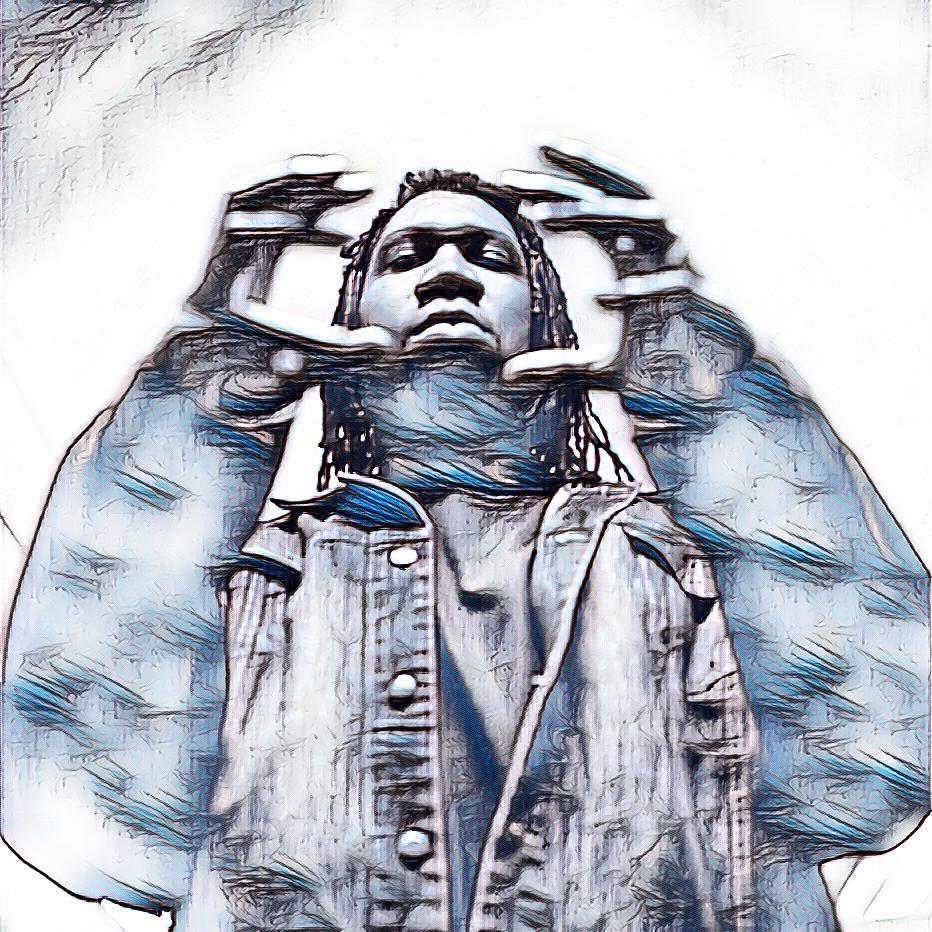
Let’s face it: Hip Hop heads love a good debate, and nothing gets the culture talking like a “Greatest Rappers” list. Here at HHGA we love lists, but we’ve always shied away from ranking emcees. It seemed like a fool’s errand – how do you quantify greatness in an art form as diverse and dynamic as rap? But after seeing some truly head-scratching lists out there (we’re looking at you, Forbes), we decided it was time to throw our hat in the ring.
This isn’t your typical popularity contest. We’re not here to crown rappers based on record sales or Instagram followers. Nah, we’re digging deeper. We’re talking about pen game, flow, technical skill, ability to rock a crowd, impact on the culture, longevity, and to a lesser extent things like fame, popularity, and hype. That means some ‘big’ names might not make the cut if we think their bars or skills don’t match their fame. And rappers who depend on ghost-writers? Not on our list.
We know this list is gonna ruffle some feathers. Your favorite might not be here, or maybe they’re lower than you think they should be. That’s cool – debate is the lifeblood of Hip Hop, even if these debates can quickly become subjective to the point of meaninglessness. So: while this is OUR definitive list, we’re not claiming it should be yours, it’s just our take based on decades of listening, analyzing, and living this culture.
We’re giving props to the pioneers who laid the foundation, the lyrical assassins who elevated the art form, and the innovators pushing boundaries today. You’ll see some undisputed legends, some underrated greats, and maybe a few surprises that’ll make you hit rewind on their catalog. Our preference for artists with long-standing careers should be no surprise, given our background. To earn a place among the best, an artist needs a substantial history, in our opinion. While most rappers on this list have decades of work behind them, we’ve included a few with shorter or more recent careers because their talent and the quality of their work are simply undeniable.
This list is a love letter to Hip Hop in all its forms. From the boom-bap of New York to the gangsta rap of LA, to the Dirty South sounds of Atlanta – we’re celebrating the emcees who’ve shaped and are continuing to shape this global phenomenon.
So grab your headphones, listen to these rappers as we talk about them, get ready to nod your head, and maybe even screw up your face at some of our choices. This is our definitive Top 50 Greatest Rappers of All Time. Let the debates begin.
50. Melle Mel
Melle Mel is a true OG, a pioneer who helped birth Hip Hop as we know it. As a founding member of Grandmaster Flash and the Furious Five, he was there when the culture was still taking its first breaths in the Bronx.
His booming voice commanded attention, cutting through weak sound systems and dominating crowds when rap was still unnamed. But Melle Mel’s true power lay in his pen. “The Message” was a seismic shift in music when it dropped in 1982. He painted gritty, vivid portraits of urban struggle, elevating rap beyond party rhymes to a form of potent social commentary. Tracks like “Beat Street,” “White Lines (Don’t Do It),” and “New York, New York” were other examples of his ability to tackle complex issues with unflinching honesty. This raw truth-telling became Hip Hop’s signature.
Melle Mel didn’t simply participate in Hip Hop’s early days – he architected its future. And even though he doesn’t have a catalog on par with his significance, every emcee who followed has built upon the foundation he laid. His influence resonates through decades of rap, so bow down to the legend; Melle Mel helped create the game we’re all playing.
49. Killah Priest
Killah Priest is one of Hip Hop’s most enigmatic and intellectually profound voices. Born Walter Reed in Brooklyn’s Bedford-Stuyvesant projects, Priest emerged from the extended Wu-Tang family to carve out a unique lane as rap’s metaphysical maestro.
From his early appearances with Gravediggaz and his legendary verse on GZA’s “B.I.B.L.E.,” Priest established himself as a lyricist of rare depth. His bars are dense with religious allegory, historical references, and cosmic imagery that reward repeated listens.
Priest’s solo catalog is a treasure trove for those willing to dive deep. Albums like Heavy Mental (1998), Elizabeth (Introduction To The Psychic) (2009), The Psychic World of Walter Reed (2013), and Planet Of The Gods (2015) are sprawling epics that blend street wisdom with esoteric knowledge. His recent works, like Rocket to Nebula (2020), push further into experimental territory, eschewing traditional beats for dreamlike soundscapes.
Killah Priest’s commitment to his artistic vision apart is unwavering. In an era of disposable content, he crafts albums that demand – and reward – full immersion. His baritone flow and vivid imagery create worlds in which listeners get lost. While he may never have achieved mainstream fame, Killah Priest’s influence on Hip Hop’s intellectual and spiritual fringes is indisputable. He is a beacon for those who seek more than surface-level lyricism, a true artist’s artist whose work continues to challenge and inspire.
Essential albums: Heavy Mental (1998), Elizabeth (Introduction To The Psychic) (2009), The Psychic World of Walter Reed (2013), Rocket to Nebula (2020)
48. Mos Def
Mos Def, now known as Yasiin Bey, is an emcee who captured hearts as soon as he appeared on the scene. Born Dante Terrell Smith in New York City, he began reshaping the rap game in the late ‘90s with his deep conscious lyrics and versatile style. His work with Talib Kweli in the duo Black Star brought him recognition for his soulful essence and thought-provoking wordplay. Their 1998 debut album, Mos Def & Talib Kweli Are Black Star, is hailed as a classic, addressing critical societal issues like racism and poverty with a blend of intelligence and artistry.
His 1999 debut solo album Black On Both Sides is celebrated for its artistic vision, featuring standout tracks like “Ms. Fat Booty” and “UMI Says.” These songs demonstrate his ability to effortlessly switch from bawdy storytelling to profound reflections on black liberation. His lyrical prowess and ability to infuse complex metaphors into his critiques of society elevate his rapping to the level of poetry.
After making a triumphant return with The Ecstatic in 2009, Bey continued to evolve, both as an artist and an actor. His performances in films like “Brown Sugar” and the TV show “Dexter” proved his range beyond music. In 2011, he adopted the name Yasiin Bey, starting a new phase in his illustrious career. Whether through his groundbreaking work with Black Star or his impactful solo projects, Yasiin Bey earned his place among Hip Hop’s elite.
Essential albums: Mos Def & Talib Kweli Are Black Star (1998), Black On Both Sides (1999)
47. Kool Moe Dee
Kool Moe Dee, born Mohandas DeWese in 1963, is a Hip Hop pioneer who helped shape the genre’s early sound and style. Rising from the block parties of Harlem, he first made waves as part of the Treacherous Three, dropping iconic singles like “The New Rap Language” and “Body Rock” in the early ’80s.
After the group split, Kool Moe Dee’s solo career took off. His self-titled 1986 debut LP set the stage (with the hit single “Go See The Doctor” as its centerpiece), but 1987’s How Ya Like Me Now catapulted him to stardom. The platinum-selling album had his commanding delivery and razor-sharp rhymes front and center, making him one of the leading rappers of his era.
Moe Dee’s impact extended beyond album sales. He became the first rapper to perform at the Grammys and was part of the groundbreaking “Self-Destruction” single. His appearance on Quincy Jones’ “Back on the Block” alongside other rap legends bridged generational gaps in Black music. His beef with LL Cool J became one of Hip Hop’s first high-profile feuds, pushing both artists to new lyrical heights. Moe Dee’s bold style and uncompromising attitude influenced countless emcees who followed.
While his commercial peak was brief, Kool Moe Dee’s significance in Hip Hop history is massive. He helped elevate rap from an underground phenomenon to a mainstream art form, paving the way for future generations. His legacy as an innovator, skilled lyricist, and fearless artist secures his place on this list.
46. Aceyalone
Aceyalone is a West Coast emcee who helped shape the underground scene in Los Angeles during the early ’90s. As a founding member of Freestyle Fellowship, he was at the forefront of a movement that prioritized lyrical dexterity and creative expression over the gangsta rap that dominated the region back then.
Emerging from the legendary Good Life Café as a co-founder of Freestyle Fellowship and of alternative Hip Hop collective Project Blowed, Aceyalone honed his craft in freestyle battles and open mics. His work with Freestyle Fellowship, particularly on the group’s classic sophomore album Innercity Griots (1993) showcased his unique flow and wordplay, setting a new standard for lyricism on the West Coast.
His solo debut, All Balls Don’t Bounce (1995), cemented his reputation as one of the West Coast’s most gifted lyricists. But 1998’s A Book of Human Language truly set Aceyalone apart. This concept album, produced by Mumbles, is a lyrical tour de force that pushed Hip Hop into uncharted territory. Dense with metaphors and abstract concepts, it’s a masterpiece that rewards repeated listens but was unfortunately slept on by many.
Throughout his career, Aceyalone has always rejected mainstream trends in favor of artistic integrity. While never achieving massive commercial success, Aceyalone proved that rap could be intellectually challenging, poetically rich, and musically adventurous. For those who value lyrical innovation and true artistic vision, Aceyalone is essential, and he is a worthy addition to any list of all-time greats.
Essential albums: Innercity Griots (1993), All Balls Don’t Bounce (1995), A Book of Human Language (1998)
45. Gift Of Gab
Gift of Gab, one half of the legendary Blackalicious duo, was a lyrical virtuoso from Sacramento, California. He exploded onto the scene in 1999 with Blackalicious’s debut Nia, an album that quickly became a cult classic and revealed his unparalleled wordplay.
Gab’s technical prowess was mind-blowing. He could effortlessly spit rapid-fire rhymes packed with intricate internal schemes and multisyllabic words that would leave other emcees in awe. His iconic track “Alphabet Aerobics” is a jaw-dropping display of verbal gymnastics, but it’s only the tip of the iceberg regarding his abilities.
Albums like Blazing Arrow (2002) further solidified Gab’s status as one of Hip Hop’s elite lyricists. His content was as rich as his delivery, exploring complex themes with intelligence and depth. This commitment to substance over style may have limited his mainstream appeal, but it earned him the undying respect of true Hip Hop heads.
Sadly, Gift of Gab passed away in 2021 due to kidney failure. His loss was deeply felt in the Hip Hop community, but his presence is eternal. For those who value technical skill, poetic complexity, and genuine artistry in rap, Gift of Gab will always be remembered as one of the greatest ever to touch a mic.
Essential albums: Nia (1999), Blazing Arrow (2002)
44. Kendrick Lamar
Kendrick Lamar is a generational talent, even earning respect from old-school Hip Hop heads like us who might not always vibe with his unconventional vocal inflections and rap styles. His rise to Hip Hop royalty has been meteoric, with a discography that reads like a list of modern classics.
His breakout album good kid, m.A.A.d city (2012) introduced the world to Kendrick’s linguistic prowess and conceptual storytelling, while To Pimp A Butterfly (2015) transcended genre boundaries, becoming a cultural landmark. DAMN. (2017) solidified his mainstream appeal and earned him a historic Pulitzer Prize.
Kendrick’s lyricism is always clever, combining vivid storytelling with sharp social commentary always featuring fearless experimentation and his masterful flows. With 17 Grammys and counting, Kendrick has firmly established himself among rap’s elite. His influence extends beyond music, as seen in his work on the “Black Panther” soundtrack and his pgLang collective. He’s earned his spot among Hip Hop’s finest, bridging the gap between commercial success and artistic integrity in a way few others have managed.
However, it’s worth noting that some feel the younger generation can be overzealous in their praise, sometimes glossing over the contributions of earlier rap pioneers when crowning Kendrick the GOAT. While he may not top OUR all-time list, his inclusion here among the greatest is indisputable – Kendrick Lamar’s presence on this list speaks volumes about his talent and impact.
Essential albums: good kid, m.A.A.d city (2012), To Pimp A Butterfly (2015)
43. Skyzoo
Skyzoo, born Gregory Skyler Taylor in Brooklyn’s Crown Heights, has been a formidable presence in Hip Hop since the early 2000s. This Brooklyn emcee has consistently delivered dexterous narratives about city life, daily struggles, and dreams of success, earning his place among the best rappers of his generation.
Skyzoo grew up admiring local legends like The Notorious B.I.G. and Jay-Z. He cut his teeth on numerous mixtapes, collaborating with respected producers like Jay Dee and 9th Wonder. His 2006 project with 9th Wonder, Cloud 9: The 3 Day High, set the stage for his solo career.
Skyzoo’s official debut, The Salvation (2009), established him as one of rap’s brightest talents. The album, featuring production from Just Blaze, 9th Wonder, and Illmind, matched tough beats with Skyzoo’s cutting lyricism. Since then, he’s released a string of excellent albums, each showcasing his growth as an artist and storyteller.
His discography is remarkably consistent, both extensive and critically acclaimed, Skyzoo has proven himself to be a true emcee with an exceptional pen game and mic presence. His near-flawless catalog coupled with his ability to craft compelling narratives while maintaining technical excellence earns him this place among Hip Hop’s elite.
Essential albums: The Salvation (2009), Barrel Brothers (with Torae) (2014), Music for My Friends (2015), The Easy Truth (with Apollo Brown) (2015), Retropolitan (with Pete Rock) (2018), All the Brilliant Things (2021)
42. Big Pun
Big Pun, the lyrical juggernaut from the Bronx, was a force of nature in the rap game. This heavyweight emcee burst onto the scene in the late ’90s, dropping bars so dense they had their own gravitational pull.
Let’s talk about Capital Punishment (1998). This album was a declaration of war on lyrical mediocrity in Hip Hop. Pun came through with wordplay so intricate, you needed a map to navigate it. Tracks like “Beware”, “You Ain’t a Killer”, and “Super Lyrical” (with Black Thought), had heads spinning, trying to catch every punchline and metaphor. But Pun wasn’t all lyrical flexing. “Still Not a Player” proved he could craft a radio-friendly hit without dumbing down his style. That track flipped a Brenda Russell sample into a salsa-tinged banger that had the whole world singing along.
Pun’s technical prowess was off the hook. The man could spit multisyllabic rhymes faster than most people can think. His flow on “Tres Leches (Triboro Trilogy)” should still studied by aspiring emcees today. As the first Latino solo rapper to go platinum, Pun kicked down doors for a whole generation of artists.
Big Pun’s life was cut short at 28, but his legacy looms large. In a time when mainstream Hip Hop was moving away from lyricism, Pun reminded everyone that bars still matter. He wasn’t here for long, but he left an indelible mark on Hip Hop that’s still felt today.
Essential albums: Capital Punishment (1998)
41. Lupe Fiasco
Chicago’s Lupe Fiasco has carved out a unique space in Hip Hop with his intricate lyricism, socially conscious themes, and reflective storytelling. Emerging in 2006 with his debut album Food & Liquor, Lupe quickly established himself as more than just another rapper – he was a thought-provoking force addressing life, politics, and social issues.
His career has been marked by both critical acclaim and commercial success. Albums like Food & Liquor, The Cool (2007), Tetsuo & Youth (2015), and the conceptual masterpiece Drogas Wave (2018) are the classics in his discography. Tracks such as “Kick, Push,” “Superstar,” and “The Show Goes On” have become fan favorites, while “Mural” is widely regarded as one of the best songs of the 2010s.
Lupe’s influence extends beyond his music. As an entrepreneur and community advocate, he’s used his platform to foster creative discourse and opportunities in underprivileged communities. His efforts have earned him recognition as a Henry Crown Fellow and GQ’s Man of the Year in 2006.
Despite some ups and downs in his career and a couple of duds in his catalog, Lupe’s dedication to lyricism has never wavered. His poetic, uplifting nature and insightful lyrics connect him to rap’s rich lineage, earning him his place on this list.
Essential albums: Food & Liquor (2006), The Cool (2007), Tetsuo & Youth (2015), Drogas Wave (2018)
40. Snoop Dogg
Snoop Dogg is a West Coast icon who’s become one of Hip Hop’s most recognizable figures. His journey began in Long Beach, California, where he caught the ear of Dr. Dre. Snoop’s debut on Dre’s “Deep Cover” in 1992 was the start of something monumental. When The Chronic dropped later that year, Snoop’s laid-back flow and distinctive voice helped define the G-funk era. His verses on tracks like “Nuthin’ But a ‘G’ Thang” became instant classics, setting the stage for his solo career.
In 1993, Snoop’s debut album Doggystyle shattered records, becoming the first debut album to enter the Billboard 200 at number one. It sold over 800,000 copies in its first week, establishing Snoop as a force to be reckoned with. The album, packed with hits like “Gin and Juice” and “Who Am I? (What’s My Name?)”, is now considered a quintessential West Coast rap record.
While none of Snoop’s later albums reached the heights of Doggystyle, he continued to evolve. He explored different sounds, from gangsta rap to more melodic productions, and even ventured into reggae as Snoop Lion. His versatility shines through in collaborations across genres and generations, from 2Pac to Kendrick Lamar.
Beyond music, Snoop has become a cultural icon and entrepreneur. His laid-back persona, business ventures, and mainstream appeal have made him a global celebrity, transcending Hip Hop. In 2022, Snoop came full circle by purchasing Death Row Records, his former label.
Snoop’s influence on Hip Hop is undeniable. From his smooth flow to his storytelling abilities, he’s left an indelible mark on the genre, helping to bring West Coast rap to the forefront and making Hip Hop more accessible to the masses.
Essential albums: Doggystyle (1993)
39. Big L
Big L, born Lamont Coleman in Harlem, was a lyrical prodigy whose life was tragically cut short. Rising from freestyle battles on the streets, he quickly made a name for himself with his razor-sharp wit and intricate wordplay.
His 1995 debut, Lifestylez ov da Poor & Dangerous, didn’t immediately set the charts on fire, but it’s now considered a Hip Hop classic. Tracks like “Put It On” and “MVP” showcased Big L’s unparalleled ability to string together complex rhyme schemes and deliver punchlines that left listeners rewinding to catch every bar.
Big L’s flow was rapid-fire yet crystal clear, his content a mix of street narratives and clever wordplay that few could match. He gained respect from peers and Hip Hop heads alike, becoming a key member of the Diggin’ in the Crates crew alongside Lord Finesse and others. The single “Ebonics” in 1998 seemed poised to catapult Big L to mainstream success. Tragically, he was gunned down in Harlem in 1999 at just 24 years old. His posthumous album, The Big Picture (1999), gave fans a bittersweet taste of his immense potential.
Despite his limited catalog, Big L’s impact on Hip Hop is profound. He was a master lyricist and he influenced countless emcees who followed. While we’ll never know what could have been, Big L’s raw talent and innovative rhyme style ensure his place among rap’s best.
Essential albums: Lifestylez ov da Poor & Dangerous (1995)
38. MC Lyte
MC Lyte, the Brooklyn-born queen of rap, burst onto the scene in 1987 like a lyrical thunderbolt and shattered ceilings in Hip Hop’s boys’ club. At 16, she dropped “I Cram to Understand U (Sam),” a track that tackled the crack epidemic with a maturity beyond her years. This wasn’t your typical teenage fare – Lyte came out swinging, her distinctive voice and powerful lyrics demanding attention.
In ’88, Lyte made history with Lyte as a Rock, the first full-length album by a solo female rapper. From battle rhymes to heartfelt narratives, she proved she could hang with – and often outshine – her male counterparts. Hits like “Paper Thin“, “10% Dis”, and “Cha Cha Cha” (from Eyes On This) showcased her lyrical dexterity and take-no-prisoners attitude.
Lyte’s stature only grew in the ’90s. “Ruffneck” became her third No. 1 on the Billboard Hot Rap Singles chart and earned her a gold certification – another first for a female emcee. The track also snagged a Grammy nod, making Lyte the first woman in rap to receive that honor.
But Lyte’s legacy extends beyond the charts. She paved the way for generations of female rappers, proving that women in Hip Hop could be both commercially successful and critically acclaimed. From organizing all-female Hip Hop showcases to mentoring up-and-coming artists, Lyte continues to champion women in the genre.
MC Lyte isn’t a footnote in Hip Hop history – she’s a whole damn chapter. Her fearless approach, unmistakable flow, and groundbreaking achievements make her an indubitable icon in the rap game.
Essential albums: Lyte as a Rock (1988), Eyes on This (1989)
37. J-Live
J-Live, born Jean-Jacques Cadet, is a hidden gem in the Hip Hop world, an artist who embodies the essence of true lyricism and soulful production. Emerging from New York’s underground scene in the mid-90s, J-Live quickly caught the attention of Hip Hop purists with his 1995 single “Bragging Writes.” His thoughtful, confident flow and soul-inflected beats resonated with fans seeking substance over style.
Despite early promise and collaborations with heavyweights like Prince Paul, DJ Premier, and Pete Rock, J-Live’s career faced significant hurdles. Label troubles and bootlegs delayed his debut album The Best Part for four years, creating an air of mystery around the artist. During this time, J-Live ‘moonlighted’ as an eighth-grade teacher, while continuously refining his craft.
When The Best Part finally dropped in 2001, it was worth the wait. This album, along with 2002’s All Of The Above, are underground classics, displaying J-Live’s exceptional wordplay and production skills. Subsequent releases like The Hear After (20005), Then What Happened? (2008), and S.P.T.A. (Said Person of That Ability) (2011) further cemented his reputation as a top-tier lyricist.
J-Live’s approach to Hip Hop is refreshingly authentic. As he spits in one of his tracks, “I prefer the ones with the lyrics of the year, than the with the gear and the right puppeteer.” This ethos has earned him a devoted following among true Hip Hop heads, even if mainstream success has remained elusive.
While some overlook J-Live’s contributions, his body of work speaks for itself. From his early days to his recent independent releases, J-Live continues to create music that inspires and challenges listeners, proving that real Hip Hop is alive and well.
Essential albums: The Best Part (2001), All Of The Above (2002)
36. Busta Rhymes
Busta Rhymes is a force of nature in the rap game, a Brooklyn-born tornado of lyrical prowess and larger-than-life charisma. He burst onto the scene with Leaders of the New School, but it was his show-stopping verse on A Tribe Called Quest’s “Scenario” that had everyone asking, “Who’s that guy with the wild flow?”
From there, Busta’s career took off like a rocket. His 1996 solo debut, The Coming, was aptly named – it was like Hip Hop’s Big Bang, unleashing a new era of high-energy rap. Tracks like “Woo Hah!! Got You All in Check” were guaranteed party-starters.
But Busta’s not a one-trick pony. This man’s got range for days. He can spit rapid-fire rhymes that’ll make your head spin, then turn around and drop smooth collaborations with R&B royalty like Mariah Carey and Janet Jackson. And let’s not forget those mind-bending music videos with Hype Williams – “Put Your Hands Where My Eyes Could See” still looks like it’s from the future.
On stage, Busta’s a whole different animal. His performances are less concerts and more controlled chaos, with every bar delivered with the intensity of a championship fight. Even decades into his career, he’s still dropping heat, collaborating with new school titans like Kendrick Lamar.
In a genre full of larger-than-life personalities, Busta Rhymes towers above the rest. When it comes to the greatest rappers of all time, Busta’s name is carved into the stone.
Essential albums: A Future Without a Past… as part of the Leaders of the New School (1991), The Coming (1996), When Disaster Strikes… (1997), Extinction Level Event: The Final World Front (1998)
35. Canibus
Canibus exploded onto the Hip Hop scene in the ’90s, quickly establishing himself as a lyrical force to be reckoned with. His razor-sharp wordplay, complex vocabulary, intricate rhyme schemes, and unmatched freestyle ability saw him rise above his peers, earning him respect in underground circles and beyond.
While his infamous beef with LL Cool J may have derailed his mainstream momentum, it did nothing to diminish Canibus’ raw talent. His debut album, Can-I-Bus, dropped in 1998, giving the world a taste of his intricate bars and thought-provoking content.
Throughout his career, Canibus has consistently delivered top-tier lyricism, even when production didn’t always match his verbal prowess, to say he doesn’t have a great ear for beats is an understatement. His fifth album, Rip the Jacker (2003), produced entirely by Stoupe the Enemy of Mankind, is widely considered a classic, arguably the only Canibus album with top-tier production from start to finish. It perfectly marries Canibus’ dense, metaphor-laden rhymes with atmospheric beats, creating a masterclass in emceeing.
While commercial success may have eluded him, Canibus raised the bar for technical skill and lyrical complexity, inspiring countless aspiring emcees who followed. For Hip Hop heads like us who value pure lyrical ability, Canibus will always be considered one of the best to ever do it.
Essential albums: Rip the Jacker (2003)
34. Roc Marciano
Roc Marciano, a pivotal figure in underground Hip Hop, has carved out a unique space in the genre over the past two decades. After parting ways with Busta Rhymes’ Flipmode Squad in 2001, Marciano honed his craft, eventually becoming a cornerstone for contemporary rap acts like Westside Gunn, Boldy James, Mach Hommy, and many others.
Born Rakeem Calief Myer on Long Island, Marciano’s journey through the Hip Hop landscape included stints with The U.N. and Flipmode Squad before he struck out on his own. His solo debut, Marcberg (2010), was a game-changer, redefining street rap with its minimalist, sample-heavy production and Marciano’s unorthodox flow.
Marciano’s style is characterized by intricate rhyme schemes, creative wordplay, and a laid-back delivery. His lyrics paint vivid pictures of urban life, blending gritty realism with poetic flair. This distinctive approach has earned him critical acclaim and a dedicated following in the underground scene.
From Marcberg to 2024’s Marciology, Marciano has maintained an impressive level of quality across his discography. Only contemporaries like Ka and billy woods can claim a similarly strong and consistent catalog throughout the 2010s and 2020s. Roc Marciano’s innovative approach to production and lyricism has inspired a whole new generation of artists, helping to keep the spirit of authentic, New York-style street rap alive in the modern era.
Essential albums: Marcberg (2010), Reloaded (2012), The Elephant Man’s Bones (2022)
33. GZA
GZA, aka The Genius, is the lyrical mastermind of Wu-Tang Clan, dropping science like a professor with a Ph.D. in wordplay. This Brooklyn-born wordsmith might not have the flashy charisma of some of his Wu brothers, but when it comes to pure lyricism, GZA is in a league of his own.
From his early days as The Genius to his evolution into GZA, this emcee has been crafting intricate rhymes that’ll make your head spin. On Enter the Wu-Tang (36 Chambers), GZA showed us glimpses of his power – he even got a solo track with “Clan in da Front,” laying down bars so dense you needed a machete to cut through ’em. But it was Liquid Swords (1995) that truly unleashed the beast.
Liquid Swords is a Hip Hop masterpiece. GZA’s pen game is sharp as a katana, painting vivid street tales over RZA’s dark, atmospheric beats. Tracks like “4th Chamber” and “Cold World” are sonic noir films, with GZA as the gruff narrator guiding us through the gritty streets of Shaolin.
Even as Wu-Tang’s popularity waxed and waned, GZA kept pushing himself creatively. GZA’s brilliance extends beyond Wu-Tang. His collaboration with DJ Muggs on “Grandmasters” is a chess game in musical form, each track a strategic move showcasing GZA’s lyrical prowess. His other solo albums are often overlooked but are strong listens too, especially Legend of the Liquid Sword (2002).
GZA might not be the flashiest in the Wu-Tang hierarchy, but he’s undoubtedly the backbone. Method Man said, “We form like Voltron, and GZA happen to be the head.” When it comes to pure lyricism and storytelling, few can touch The Genius. He might not be the loudest voice in the room, but when GZA speaks, real heads listen.
Essential albums: Enter the Wu-Tang (36 Chambers) (1993), Liquid Swords (1995), Wu-Tang Forever (1997), Legend of the Liquid Sword (2002)
32. Ka
Ka, born Kaseem Ryan in Brownsville, Brooklyn, was a unique voice in Hip Hop who prioritized poetic depth over mainstream appeal. His career began in the early 90s with Natural Elements, but it’s with his solo work his exceptional talent as a lyricist and producer shined. Tragically, Ka passed away unexpectedly on October 12, 2024, a devastating loss for the Hip Hop community.
Unlike many of his peers, Ka’s approach to rap was deliberate and reflective. He crafted minimalist beats that were perfect for his dense, literary lyrics. Each of his albums was a meticulously constructed piece of art, demanding multiple listens to fully appreciate the layers of meaning woven into every line.
Ka’s discography reads like a series of philosophical explorations into urban life’s harsh realities. From his debut Iron Works (2008) to his last album The Thief Next To Jesus (2024), he painted vivid pictures of street life, personal struggle, and the search for wisdom amidst chaos. His wordplay was deep, often drawing parallels between modern struggles and ancient warrior codes, creating a rich tapestry of metaphor and allusion.
Ka self-produced, self-released, and even hand-mailed albums to fans. This DIY ethic permeated his music, giving it a raw authenticity that’s increasingly rare in today’s industry. His voice was gruff yet restrained, as if he were sharing secrets in hushed tones, forcing listeners to lean in and pay close attention. Ka’s role in Hip Hop may have been subtle, but it was significant. He preserved a strain of New York rap that prioritized lyricism and storytelling above all else. His verses were like incantations, densely packed with multisyllabic rhymes and double entendres that rewarded careful study.
Beyond his technical skills, Ka was a philosopher at heart. His lyrics grappled with themes of legacy, sacrifice, and survival, offering profound insights into the human condition. He reflected on what was owed—by society, by history, and by himself—creating music that served as both personal catharsis and social commentary.
For those who value depth, poetic prowess, and uncompromising artistry in Hip Hop, Ka is essential listening. His body of work is like a form of literature, giving meaning to the term Hip Hop poetry. Often overlooked, Ka is an unmissable addition to our list of greatest rappers, and his passing only amplifies the magnitude of his influence and the void left in his absence.
Essential albums: The Night’s Gambit (2013), Days With Dr. Yen Lo (with Preservation, as Dr. Yen Lo) (2015), Honor Killed the Samurai (2016), Orpheus vs. the Sirens (with Animoss, as Hermit and the Recluse) (2018), Descendants of Cain (2020), A Martyr’s Reward (2021), The Thief Next To Jesus (2024)
31. Q-Tip
Q-Tip is Hip Hop’s Renaissance man. As the frontman of A Tribe Called Quest, he helped revolutionize the game with classic albums The Low End Theory (1991) and Midnight Marauders (1993), perfecting the art of jazz rap. This Harlem-born wordsmith isn’t your average rapper. Q-Tip’s flow is smoother than a Miles Davis trumpet solo, effortlessly gliding over jazzy beats with a wit that’ll make your head spin. His delivery is so slick, it’s like he’s not even trying – but trust us, every bar is meticulously crafted.
Q-Tip’s genius extends beyond his group work. His solo work, particularly 2008’s The Renaissance, showed he could shine on his own, flexing his pop sensibilities while maintaining his artistic integrity. His production credits read like a who’s who of Hip Hop and R&B, from Nas to D’Angelo. Whether he’s rhyming over jazzy samples or producing chart-topping hits, Q-Tip’s musical fingerprints are all over the place.
With a career spanning over three decades, multiple classic albums, and a style that continues to inspire, Q-Tip has rightfully earned his place among rap’s greatest. The Abstract isn’t content to rest on his laurels, though – he’s still pushing the culture forward, one beat and one rhyme at a time.
Essential albums: People’s Instinctive Travels and the Paths of Rhythm (1990), The Low End Theory (1991), Midnight Marauders (1993), The Renaissance (2008)
30. Inspectah Deck
Inspectah Deck, the unsung hero of Wu-Tang Clan, is a lyrical sniper whose precision and depth often fly under the radar. This Park Hill Projects native might not have the flashiest persona, but his pen game is nothing short of legendary.
From the jump, Deck was dropping bombs on “Enter the Wu-Tang (36 Chambers).” Remember that opening verse on “Protect Ya Neck”? That was Deck setting the tone for Wu-Tang’s takeover. And let’s not forget his immortal bars on “C.R.E.A.M.” – pure poetry over gritty beats.
But it’s his verse on “Triumph” that’s etched in Hip Hop history. Opening an all-star posse cut with one of the most technically complex verses ever laid down? That’s Deck’s realm.
While his solo career might not have hit the same heights as some of his Wu brethren (‘thanks’ to that flood that washed away RZA’s beats for Deck’s debut), his guest spots are the stuff of legend. From Gang Starr’s “Above The Clouds,” to GZA’s “Duel of the Iron Mic” to Big Pun’s “Tres Leches,” Deck consistently brought that heat.
And just when you thought he might be slowing down, Deck linked up with 7L & Esoteric to form Czarface, dropping fire to this day. It’s a testament to his skills and longevity that he’s still impressing new generations of rap fans.
When discussing great emcees, Inspectah Deck deserves his flowers. He might be the most underrated member of Wu-Tang, but make no mistake: when it comes to pure lyrical ability, Deck is as sharp as they come.
Essential albums: Enter the Wu-Tang (36 Chambers) (1993), Wu-Tang Forever (1997), Uncontrolled Substance (1999), Every Hero Needs a Villain (2015)
29. billy woods
billy woods is an elusive and enigmatic force in underground Hip Hop, carving out a unique space with his uncompromising artistry. Hailing from Washington D.C. but deeply rooted in New York City, woods’ background is as complex as his lyrics. Born to a Jamaican intellectual and a would-be Marxist revolutionary, he spent his childhood across Africa and the West Indies, infusing his work with a global perspective that sets him apart from his peers.
woods’ journey in rap began with underground collaborations, notably Camouflage with Vordul in 2003. This low-budget, ultra-indie release set the stage for woods’ particular brand of blunted dissonance and lyrical tightrope walking. His solo debut, The Chalice, dropped in 2004, but it was his work with Super Chron Flight Brothers that truly laid the groundwork for his distinctive style. Their trilogy of concept albums – Emergency Powers: The World Tour (2007), Indonesia (2009), and Cape Verde (2010) – blended sharp sociopolitical commentary with racial humor and pop culture references, earning critical acclaim and a cult following.
2012 marked a pivotal turning point with History Will Absolve Me, a searing solo effort that kicked off an incredible streak of releases. Over the next decade, woods unleashed a barrage of stellar albums, including Today, I Wrote Nothing (2015), Known Unknowns (2017), and Hiding Places (with Kenny Segal, 2019). His collaboration with Elucid as Armand Hammer produced equally compelling work, with albums like Paraffin (2018) further solidifying his reputation.
woods’ lyrical prowess is unmatched, tackling topics most rappers wouldn’t dare or even be able to touch and bringing fresh perspectives to familiar themes. His versatile flow and unfiltered approach have earned him a devoted following among Hip Hop heads seeking substance and innovation. Despite a relatively short time in the spotlight, woods’ prolific output and consistent quality make him a standout in contemporary Hip Hop.
The 2020s have seen no slowdown in woods’ creative output. Aethiopes (with Preservation, 2022), Church (with Messiah Musik, 2022), and Maps (with Kenny Segal, 2023) are top-tier Hip Hop albums. His collaboration with experimental musician Moor Mother on BRASS and three more Armand Hammer releases demonstrate his willingness to explore new sonic territories, Haram (with the Alchemist, 2021) and We Buy Diabetic Test Strips (2023), are among the best albums released in their respective years.
While woods may not have the mainstream recognition of some of his contemporaries, his impact on underground Hip Hop is significant. His ability to weave complex narratives, deliver biting social commentary, and experiment with sound has earned him a place among underground Hip Hop’s most respected lyricists. For those seeking depth, innovation, and raw honesty in their rap, billy woods is essential listening, and he is a worthy and even logical addition to any best rappers list.
Essential albums: History Will Absolve Me (2012), Known Unknowns (2017), Paraffin (2018), Hiding Places (2019), Haram (2021), Aethiopes (2022), Maps (2023), We Buy Diabetic Test Strips (2023)
28. Posdnuos
Posdnuos, born Kelvin Mercer, is a Hip Hop heavyweight. As part of De La Soul, this emcee has been spitting some of the smoothest rhymes the genre has ever heard. Plug 1, as he’s also known, brings that ’80s flavor to everything he touches. His witty wordplay and captivating narratives are the secret sauce that makes De La Soul’s music so damn irresistible. When he teamed up with Plug 2 (the late, great Trugoy the Dove), magic happened. Their chemistry was tangible, resulting in a busload of tracks that stand the test of time.
Let’s talk classics. 3 Feet High and Rising (1989) changed the game, period. Pos and his crew reshaped Hip Hop’s landscape with their debut, and they didn’t stop there. De La Soul dropped four straight classic albums, making their status as one of the greatest groups in Hip Hop history undisputable.
But here’s the kicker – Posdnuos often flies under the radar when we’re talking about the greatest rappers. Maybe it’s because he’s such a crucial part of De La Soul that we forget to shine the spotlight on him individually. But make no mistake, his pen game and technical skills are top-tier.
From his animated flows to his endless quotables, Posdnuos embodies everything we love about Hip Hop. He’s not a one-trick pony; he’s the whole damn circus. So when you’re making your list of the greatest rappers of all time, don’t sleep on Plug 1. He’s earned his spot among the legends.
Essential albums: 3 Feet High and Rising (1989), De La Soul Is Dead (1991), Buhloone Mindstate (1993), Stakes Is High (1996)
27. Aesop Rock
Aesop Rock emerged from New York’s underground scene in the late 1990s to become one of Hip Hop’s most intriguing and technically skilled emcees. His dense, abstract wordplay and expansive vocabulary challenge listeners to unpack his cryptic verses like linguistic puzzles.
Since his obscure 1997 debut, Aesop has dropped numerous solo albums and collaborative projects, each displaying his unique brand of intellectually charged rap. A 2014 study even crowned him as having the largest vocabulary in Hip Hop, surpassing 85 other major artists and even Shakespeare.
Albums like his early classic Labor Days (2001), arguably his best work The Impossible Kid (2016), and the more recent Spirit World Field Guide (2020) and Integrated Tech Solutions (2023) highlight Aesop’s storytelling prowess. He can craft vivid narratives about blue-collar struggles or construct surreal worlds populated by spirits, all delivered with his signature rapid-fire flow and mind-bending wordplay.
Aesop’s style is polarizing – you either love him or you don’t. But even his detractors can’t deny his lyrical skill. He transforms even the most mundane topics into poetic gold, weaving references both obscure and pop-cultural into his rhymes. While he may not have achieved massive mainstream success, Aesop Rock has earned a dedicated following and critical acclaim. For fans of intricate lyricism Hip Hop, Aesop Rock is a must and he deserves recognition among rap’s elite wordsmiths.
Essential albums: Labor Days (2001), None Shall Pass (2007), The Impossible Kid (2016)
26. Treach
Treach, the New Jersey-born emcee who fronted Naughty by Nature, is a technical wizard on the mic who often doesn’t get the recognition he deserves. His rapid-fire delivery and intricate wordplay set a new standard for lyrical prowess in the 90s. As the face of Naughty by Nature, Treach perfected a formula that balanced street credibility with mainstream appeal. Hits like “O.P.P.“, “Hip Hop Hooray“, and “Feel Me Flow“, became cultural touchstones, crossing over to pop radio without compromising their Hip Hop roots. This success sometimes overshadowed Treach’s raw skill as an emcee, but true heads always recognized his talent.
Treach’s ability to craft multi-syllable rhymes and switch up his flow mid-verse was unparalleled. He could spit rapid-fire bars that left listeners rewinding to catch every word, then seamlessly transition into a catchy hook that would have the whole club singing along. While Naughty by Nature’s massive hits sometimes led to them being labeled as more pop than street, their music was undeniably rooted in authentic Hip Hop culture. Treach’s lyrics often reflected the gritty realities of urban life, even on their most radio-friendly tracks.
Treach’s technical skill, charismatic delivery, and ability to balance commercial appeal with street credibility make him one of the most well-rounded emcees of his era. For these reasons, Treach deserves his spot among rap’s all-time greats.
Essential albums: Naughty by Nature (1991), 19 Naughty III (1993)
25. Common
Chicago’s Common, has been a cornerstone of intelligent Hip Hop since the mid-90s. His career is a great example of the power of evolution and staying true to one’s artistic vision.
With his 1992 debut Can I Borrow a Dollar?, Common showed promise. But it was his next trio of albums – Resurrection (1994), One Day It’ll All Make Sense (1997), and Like Water for Chocolate (2000) – that cemented his status as a Hip Hop heavyweight. Tracks like “I Used to Love H.E.R.” demonstrated his ability to craft complex allegories, while “The Bitch in Yoo” proved he could hold his own in battle. Common can deliver introspective, socially conscious rhymes that paint vivid pictures of urban life, then switch gears to drop Grammy-nominated hits like “The Light“. His flow is conversational yet precise, allowing his words to resonate deeply with listeners.
Throughout his career, Common has embraced musical evolution. He’s collaborated with producers from No I.D. to J Dilla to Kanye West, adapting his style while maintaining his lyrical integrity. Excellent albums like Be (2005), Finding Forever (2007), and Black America Again (2016) show off his ability to create timeless Hip Hop that speaks to both the streets, the mind, and the soul.
Beyond music, Common has used his platform to address important social issues, becoming a voice for change and upliftment. His thoughtful approach to rap has inspired countless artists and listeners, making him an iconic figure in Hip Hop’s cultural landscape.
Essential albums: Resurrection (1994), One Day It’ll All Make Sense (1997), Like Water for Chocolate (2000), Be (2005)
24. Ghostface Killah
Ghostface Killah, man. This Staten Island wordsmith is a Hip Hop institution all on his own. Ghost’s style is like a fever dream in the best possible way. His intense flow is a high-pitched, rapid-fire assault of slang, vivid imagery, and street tales that’ll make your head spin. From the jump, Ghost stood out. His opening verse on “Bring Da Ruckus” from Wu-Tang’s 1993 debut Enter The Wu-Tang (36 Chambers) hit like a sledgehammer.
It was his tag-team effort with Raekwon on Only Built 4 Cuban Linx... in 1995 that set the stage for his solo takeover. Ghost’s solo debut Ironman dropped in ’96, and it was clear – this was the official birth of a rap titan. Tracks like “Daytona 500” and “All That I Got Is You” showed Ghost could spit fire and touch your soul in equal measure.
But it was Supreme Clientele in 2000 that took Ghost to another level. This album is pure lyrical wizardry, with Ghost painting vivid street tales using a palette of slang that’d make your English teacher’s head spin. “Nutmeg” alone is a masterclass in abstract rhyming. Ghost didn’t slow down in the 2000s, dropping classics like Fishscale and the conceptual Twelve Reasons to Die. His storytelling ability is unmatched, creating cinematic narratives that transport listeners to a gritty, colorful world uniquely Ghostface.
While other emcees fade, he’s been dropping heat for over three decades. From Wu-Tang classics to jazz collabs, Ghost has proven he can spit over anything. In the pantheon of great emcees, Ghostface Killah’s name is written in bold. He’s not just one of the best out of Wu-Tang – he’s one of the best, period. Long live Tony Starks!
Essential albums: Enter the Wu-Tang (36 Chambers) (1993), Ironman (1996), Wu-Tang Forever (1997), Supreme Clientele (2000), Fishscale (2006), Twelve Reasons to Die (2013)
23. Redman
Redman has been bringing the funk since the early ’90s. This Newark, New Jersey native first caught ears with his appearances on EPMD tracks, impressing Erick Sermon with his raw freestyle skills. From there, Redman’s career took off like a rocket. His 1992 debut Whut? Thee Album is a certified golden age classic, blending funky beats with Redman’s unique brand of rugged humor and sharp wordplay. It earned him Rap Artist of the Year from The Source, proving he was no flash in the pan.
Throughout the ’90s and beyond, Redman kept dropping heat. His albums consistently went gold, thanks to his unmatched energy and quotable punchlines. He’s a rapper’s rapper – Eminem even named him one of the greatest emcees in “Till I Collapse.”
Redman’s chemistry with Wu-Tang Clan’s Method Man is legendary. Their “Blackout!” albums and the stoner comedy “How High” established them as one of Hip Hop’s most beloved duos. Whether solo or collaborating, Redman brings an infectious personality that fans just can’t get enough of.
What makes Redman special is his ability to balance hardcore rhymes with laugh-out-loud humor. He’s equally at home spitting gritty street tales or crafting weed-fueled party anthems. Even in his 50s, Redman’s live performances are a force of nature, proving he’s still one of the most dynamic emcees in the game.
Essential albums: Whut? Thee Album (1992), Dare Iz a Darkside (1994, Muddy Waters (1996)
22. Masta Ace
Masta Ace, the Brownsville, Brooklyn native, is a Hip Hop chameleon who’s been shape-shifting through rap’s evolution since the late ’80s. This lyrical heavyweight first turned heads as part of Marley Marl’s legendary Juice Crew, with his verse on “The Symphony” in 1988. But that was only the beginning of Ace’s incredible run.
His 1990 debut Take a Look Around set the stage, but his later work truly defined his legacy. SlaughtaHouse in ’93 cleverly flipped the script on gangsta rap, while ’95’s Sittin’ On Chrome blended East Coast lyricism with car culture vibes. In 2001, he dropped Disposable Arts, a brilliant commentary on rap’s evolution and exploitation. This kicked off a string of critically acclaimed projects that showcased his growth as an artist and storyteller.
Masta Ace’s discography is a masterclass in lyricism and storytelling. His complex wordplay, satirical wit, and conceptual ambition shine through on every track. While he might not have the mainstream recognition of some, true heads know that Ace’s skill, consistency, and longevity make him one of the greatest ever to pick up the mic.
From “The Symphony” to 2024’s Richmond Hill with Marco Polo, Masta Ace has repeatedly proven why he deserves his spot among Hip Hop’s elite.
Essential albums: SlaughtaHouse (1993), Disposable Arts (2001), A Long Hot Summer (2004)
21. Eminem
Eminem’s impact on Hip Hop is monumental, both from a technical standpoint and in terms of cultural significance. His lyrical prowess is unparalleled, with constantly shifting rhyme schemes and intricately layered internal rhymes that seem meticulously crafted. As one of the greatest emcees of his generation, Eminem is rapid, fluid, dexterous, and unpredictable, capable of delivering long-form narratives as easily as withering asides.
His first three major albums form an unbeatable trifecta. The Slim Shady LP (1999) rivals Slick Rick’s best work in storytelling. The Marshall Mathers LP (2000) balanced commercial success with raw, unfiltered content. The Eminem Show (2002) saw Slim Shady at the height of his powers, confident and unstoppable. These albums, produced with the powerful loops of his mentor Dr. Dre, evoked the terror and paranoia that became Eminem’s signature.
Eminem is one of the best-selling artists ever, with over 220 million records sold worldwide. He’s achieved ten consecutive number-one albums and won six Grammys for Best Rap Album, and 15 Grammys in total. His commercial success has helped establish Hip Hop as the most commercially successful genre globally.
But Eminem is more than sales and awards. He’s a wordsmith and technician, able to bend any word to his will and master every flow. He’s immensely respected by other great artists and is a Hip Hop purist at heart. While his work in the last two decades may not reach the heights of his early classics, Eminem’s position as one of Hip Hop’s finest wordsmiths remains secure. His technical skill, storytelling ability, and cultural impact make him a logical figure in any best rappers discussion.
Essential albums: The Slim Shady LP (1999), The Marshall Mathers LP (2000), The Eminem Show (2002)
20. Notorious B.I.G.
The Notorious B.I.G., is one of Hip Hop’s most influential figures, despite a career cut tragically short. Emerging from Brooklyn with 1993’s “Party and Bullshit,” Biggie quickly became the crown jewel of Diddy’s Bad Boy Records.
Biggie’s style was unmistakable: gritty tales delivered with a laid-back flow, deep-toned rumbling vocals, and a signature dark humor. His smooth yet powerful delivery, vivid imagery, and sharp wit made every verse count. His debut LP Ready to Die (1994) was a monumental success, followed by the double-disc Life After Death (1997), which topped the Billboard 200 for four weeks. Hits like “Juicy,” “Big Poppa,” and “One More Chance” cemented his iconic status. Biggie’s versatility was remarkable. He effortlessly switched between styles, collaborating with legends like Jay-Z and Mary J. Blige, while nurturing talent through his Junior M.A.F.I.A. clique.
Tragically, Biggie was murdered in 1997 at just 24, leaving Hip Hop with one of its biggest “what if” questions. Would he have continued his streak of excellence? Or would Puff Daddy’s marketing machine have pushed him further into mainstream pop territory? We’ll never know.
Despite his brief tenure, Biggie left an indelible mark on the genre. He proved a charismatic big man could blend lyrical street rhymes with heart and humor – and dominate the mainstream. While his catalog may be too small to crown him the undisputed GOAT, Biggie’s impact on Hip Hop is gigantic, a place of honor among the greatest rappers of all time a matter of course.
Essential albums: Ready to Die (1994), Life After Death (1997)
19. R.A. The Rugged Man
R.A. the Rugged Man is a true Hip Hop original, a lyrical powerhouse whose controversial reputation is matched only by his unbeatable skill on the mic. Hailing from Long Island, New York, R.A. has been a force in the underground rap scene for decades, earning him respect from fans and fellow artists alike for his raw authenticity and razor-sharp wordplay.
Despite being blacklisted by major labels and even banned from performing during the late ’90s underground boom, R.A. has managed to carve out a legendary career through sheer talent and determination. His complex rhyme schemes, rapid-fire delivery, and unparalleled breath control have set a new standard for technical proficiency in rap. Though he’s only released less than a handful of official albums, R.A.. is one of our favorite emcees of all time. His guest verses are the stuff of legend, usually outshining the track’s main artists.
Beyond his musical output, R.A. the Rugged Man is known for his unfiltered personality and willingness to speak his mind, regardless of the consequences. This authenticity, paired with his undeniable skills, has earned him a devoted following, the respect of Hip Hop purists worldwide, and a top spot on this list.
In a genre often dominated by image and hype, R.A. the Rugged Man represents the essence of what it means to be a “real emcee” – unapologetically skilled, fiercely independent, and always true to the culture.
Essential albums: Die, Rugged Man, Die (2004), Legends Never Die (2013), All My Heroes Are Dead (2020)
18. Jay-Z
Jay-Z, born Shawn Carter in Brooklyn’s Marcy Projects, has evolved from a street hustler to Hip Hop royalty, embodying the essence of the American Dream. His journey from the streets to the boardroom is nothing short of legendary.
Hov’s musical legacy is as strong as anyone’s. With at least three undisputed classics – Reasonable Doubt (1996), The Blueprint (2001), and The Black Album (2003) – Jay has consistently delivered quality Hip Hop across three decades. His clever wordplay, slick punchlines, and intricate storytelling have earned him 24 Grammys and the distinction of being the first rapper inducted into the Songwriters Hall of Fame.
Jay-Z also is Hip Hop’s premier businessman, co-founding Roc-A-Fella Records, serving as president of Def Jam, and launching Roc Nation. His ventures into spirits with D’usse and Armand de Brignac are other examples of his business acumen. With 14 Billboard 200 No. 1 albums and over 140 million records sold, Jay’s commercial success is staggering too.
Jay-Z tops most lists like this one, and that’s fine with us. While we have ranked others higher here based purely on artistic merit and above all our personal preferences, Jay-Z’s overall impact on Hip Hop culture – musically, culturally, and financially – is hard to overstate. He is a cultural icon who’s succeeded in every era.
Essential albums: Reasonable Doubt (1996), luepri (2001), The Black Album (2003), American Gangster (2007)
17. Scarface
Emerging from Houston’s Fifth Ward in the late ’80s, Scarface helped put Southern rap on the map when the region was still finding its voice in the Hip Hop landscape. As a founding member of the Geto Boys, Scarface was instrumental in crafting the group’s raw, unfiltered sound. Their 1991 hit “Mind Playing Tricks on Me” is widely regarded as one of the best rap songs ever, breaking new ground with its introspective lyrics and stark portrayal of paranoia and mental anguish.
It was Scarface’s solo career that truly launched him to Hip Hop’s top tier. Albums like Mr. Scarface Is Back (1991), The Diary (1994), and The Fix (2002) are stone-cold classics. Scarface’s lyrics often explored themes of loneliness, depression, and the dark side of the hustler’s mentality. This unflinching honesty and emotional depth were revolutionary, paving the way for future artists to explore more complex subject matter in their music. His influence can be heard in the work of later rap icons like 2Pac, Jay-Z, and Nas, all of whom have collaborated with and praised Scarface. His ability to blend gritty street narratives with introspective vulnerability created a template that many have emulated but few have matched.
Throughout his career, Scarface has consistently demonstrated his lyrical prowess and storytelling ability. Whether he’s crafting hard-hitting street anthems or deeply personal reflections, his authenticity and skill shine through. Scarface’s legacy as one of Hip Hop’s greatest lyricists and most influential voices is well-established, making him an unmissable figure in any discussion of the genre’s all-time greats.
Essential albums: The Geto Boys (1990), Mr. Scarface Is Back (1991), The Diary (1994), The Fix (2002)
16. 2Pac
Tupac Shakur, better known as 2Pac, arguably is the biggest icon in Hip Hop history. His impact transcends music, making him a cultural phenomenon whose influence resonates, decades after his untimely death.
2Pac’s journey from Digital Underground backup dancer to solo superstar was meteoric. His debut album, 2Pacalypse Now (1991), set the tone for his career, addressing racial injustice, police brutality, and poverty. This willingness to tackle hard-hitting topics earned him respect as a voice for the disenfranchised.
2Pac’s duality as an artist was remarkable. He could craft empathetic classics like “Dear Mama” and “Keep Ya Head Up,” then switch gears to deliver explosive tracks like “Hit ‘Em Up.” While not necessarily the most technically proficient lyricist, 2Pac’s power lies in his voice, charisma, and ability to emote and connect with listeners on a deeply personal level.
His magnum opus, All Eyez On Me (1996), is one of rap’s best-selling albums. However, it’s not without flaws. At over two hours long, it suffers from filler and repetition, particularly in its second half. Yet, its impact on Hip Hop culture is incredible.
2Pac’s legacy extends beyond music. He was a poet, actor, and activist, embodying the idea that a rapper could be more than an entertainer. His raw introspection and vulnerable honesty made him unique. Tragically gunned down at 25, 2Pac left behind a complex legacy. Seven posthumous albums, a Rock Hall of Fame induction, and a spot in the Library of Congress’s National Recording Registry for “Dear Mama” speak to his enduring influence.
While debates about his technical skills or album quality persist, 2Pac’s significance to Hip Hop is unquestionable. He wasn’t perfect, but his ability to bare his soul through music made him one of Hip Hop’s most important and celebrated figures ever.
Essential albums: Me Against the World (1995), All Eyez on Me (1996), The Don Killuminati: The 7 Day Theory (1996) (as Makaveli)
15. Andre 3000
André 3000, born André Lauren Benjamin, is an iconic figure whose innovative style and lyrical prowess have left an indelible mark on Hip Hop, and music in general. As one-half of the legendary duo OutKast, André helped put Atlanta on the Hip Hop map and revolutionized the sound of Southern rap.
From OutKast’s 1994 debut Southernplayalisticadillacmuzik to their groundbreaking albums ATLiens (1996) and Aquemini (1998), André consistently pushed rap’s envelope. His verses are a masterclass in wordplay, blending complex rhyme schemes with profound introspection and a dash of extraterrestrial flair.
André’s lyrical dexterity is matched only by his musical versatility. He effortlessly shifts from rapid-fire rhymes to soulful crooning, often within the same track. This chameleonic ability reached its apex with OutKast’s 2003 double album Speakerboxxx/The Love Below, where André’s half showcased his genre-defying creativity. But it’s not all spacey beats and alien personas. André’s lyrics often dive deep into raw vulnerability and social commentary. He can switch from humor to heartbreak in a heartbeat, taking listeners on an emotional rollercoaster with every verse.
Even without a real solo album to his name, André’s shadow looms large over Hip Hop. His guest verses are the stuff of legend, with artists clamoring for a 3 Stacks feature to elevate their tracks. Beyond music, André’s eccentric fashion sense and thoughtful public persona have made him a cultural icon. His famous declaration at the 1995 Source Awards – “The South got something to say” – wasn’t hype. It was a promise that he and OutKast delivered on, reshaping the Hip Hop landscape and inspiring countless artists in their wake.
André 3000’s contributions to Hip Hop have earned him a spot among the greatest to ever touch a mic, his legacy as one of rap’s true visionaries forever secure.
Essential albums: Southernplayalisticadillacmuzik (1994), ATLiens (1996), Aquemini (1998), Stankonia (2000)
14. MF DOOM
MF DOOM, the masked maestro of Hip Hop, remains one of the genre’s most enigmatic and influential figures. Born Daniel Dumile in London but raised in Long Island, DOOM’s journey through Hip Hop is as captivating as his intricate rhymes.
DOOM’s origin story is steeped in tragedy and reinvention. He first emerged as Zev Love X in the group KMD, but the death of his brother DJ Subroc in 1993 led to a period of retreat. When he resurfaced in the late ’90s, he had transformed into the metal-faced villain we know as MF DOOM.
The persona of DOOM, complete with his iconic mask inspired by the Marvel villain Doctor Doom, became as integral to his art as his music. This mythical character allowed DOOM to craft dense, imaginative lyrics that blended comic book references, social commentary, and unparalleled wordplay.
DOOM’s 1999 solo debut Operation: Doomsday established him as a prominent force in underground Hip Hop. But it was 2004’s Madvillainy, his collaboration with producer Madlib, that firmly made him a Hip Hop icon. This album, with its abstract production and DOOM’s dark, husky delivery, is widely regarded as one of the greatest Hip Hop albums ever made. Throughout his career, DOOM adopted various alter egos like King Geedorah and Viktor Vaughn, each adding new dimensions to his artistry. His production work, particularly the “Special Herbs” series, showcased his talent behind the boards as well.
DOOM’s complex rhyme schemes and creative approach to storytelling inspired a generation of artists and helped shape the modern underground scene. Even mainstream success came knocking, with collaborations with Gorillaz and features on Adult Swim. Sadly, DOOM’s passing in 2020 marked the end of an era. Yet, his legacy lives on. DOOM’s music and imagery continue to captivate new audiences. His mantra, “Remember ALL CAPS when you spell the man’s name,” remains a rallying cry for Hip Hop purists.
MF DOOM was a visionary. His work is a blueprint for artists who dare to be different, ensuring that the legend of the Supervillain will endure for generations to come.
Essential albums: Operation: Doomsday (1999), Madvillainy (2004)
13. Guru
Guru was a Hip Hop icon whose smooth, monotone flow and introspective lyrics helped define the sound of East Coast rap in the ’90s. As one half of Gang Starr, alongside DJ Premier, Guru created some of the most influential albums in Hip Hop history.
Guru’s early work on the first Gang Starr albums showcased his battle-rap prowess, but as he matured, his lyrics became more reflective and philosophical. His unique style differentiated him from his contemporaries. He didn’t rely on flashy delivery or aggressive posturing. Instead, his steady, almost nonchalant flow allowed his intricate wordplay and profound observations to take center stage. This approach turned Guru into a Hip Hop philosopher, packing each verse with wisdom about life, music, and society. Beyond Gang Starr, Guru’s solo “Jazzmatazz” series broke new ground, blending Hip Hop with live jazz instrumentation.
Tragically, Guru passed away in 2010 at the age of 48. His ability to evolve as an artist, his dedication to his craft, and his impact on the culture make him one of the greatest emcees in Hip Hop history. Guru’s contributions to Hip Hop, as part of Gang Starr and as a solo artist, will always be an example of authentic, intelligent rap music.
Essential albums: Step In The Arena (1991), Daily Operation (1992), Hard To Earn (1994), Moment Of Truth (1998)
12. Ice Cube
Ice Cube is a bonafide Hip Hop legend – from his explosive debut with N.W.A to his groundbreaking solo career, Cube’s journey through rap is a shining example of where raw talent and unwavering vision can lead.
As a founding member of N.W.A, Cube helped ignite the gangsta rap movement with 1988’s Straight Outta Compton. His opening verse on the title track set the tone for the entire album, introducing the world to a new, unapologetic rap style. Despite minimal radio play and controversy surrounding tracks like “F Tha Police,” the album went multi-platinum, forever etching N.W.A in the annals of music history.
But it was Cube’s solo career that truly showcased his genius. From 1990 to 1992, he released classic albums widely considered some of the best in Hip Hop history. AmeriKKKa’s Most Wanted, Death Certificate, and The Predator solidified Cube as one of rap’s most potent voices. These albums balanced razor-sharp social commentary with masterful storytelling, addressing issues like racism, police brutality, and life in South Central LA with unflinching honesty, marked by his instantly recognizable and angry flow and distinctive delivery. Tracks like Cube’s biggest hit “It Was a Good Day” demonstrated Cube’s versatility, proving he could craft feel-good hits without compromising his message.
While Cube’s later career has seen him transition into acting and entrepreneurship, his impact on Hip Hop remains undeniable. His ability to blend political consciousness with street-level realism set a new standard for rap lyricism. Ice Cube leaves a legacy as a visionary, a revolutionary, and one of Hip Hop’s greatest rappers ever and he deserves a nod high on a list like this.
Essential albums: Straight Outta Compton (1988), AmeriKKKa’s Most Wanted (1990), Death Certificate (1991)
11. Pharoahe Monch
Pharoahe Monch is one of Hip Hop’s best-kept secrets, a virtuoso wordsmith whose intricate rhyme schemes and mind-bending wordplay have earned him legendary status among true heads. From his early days with Organized Konfusion to his boundary-pushing solo career, Monch has always pushed the art of emceeing to new heights.
Born Troy Jamerson, Monch first made waves as one-half of Organized Konfusion. Their three albums – especially the classic Stress: The Extinction Agenda (1994) – showcased his unorthodox flow and conceptual brilliance. Tracks like “Stray Bullet” demonstrated Monch’s ability to craft entire narratives from unique perspectives. Monch’s solo debut, Internal Affairs (1999) brought him wider recognition. The explosive single “Simon Says” became a club staple, though sample clearance issues would later haunt its legacy. But it’s on deeper cuts where Monch’s true genius shines. His ability to bend words, stack syllables, and craft vivid imagery is unparalleled.
Throughout his career, Monch has remained a rapper’s rapper, earning respect for his technical prowess and willingness to experiment. Albums like Desire (2007) and PTSD (2014) displayed his growth as an artist and a socially conscious voice. His recent work with th1rt3en proves he’s still pushing boundaries, fusing Hip Hop with rock in exciting new ways.
Pharoahe Monch’s complete mastery of the craft is evident. His flows are unpredictable, his wordplay dizzying, and his concepts often mind-expanding. His verse on the hit song “Oh No” (with Mos Def and Nate Dogg) is a perfect example of next-level rapping. While he may not have achieved mainstream superstardom, Pharoahe Monch represents the gold standard for technical skill and lyrical innovation, a true artist’s artist whose catalog is among the best in Hip Hop.
Essential albums: Stress: The Extinction Agenda (1994), Internal Affairs (1999)
10. Ice T
Ice-T is a Hip Hop pioneer and one of the most influential figures in the genre’s history. Rising from the streets of Los Angeles in the early 1980s, Ice-T became the godfather of West Coast gangsta rap, paving the way for countless artists who followed in his footsteps.
His 1986 track “6 N the Mornin'” is widely regarded as the spark that ignited the West Coast gangsta rap explosion. This raw, unfiltered look at street life inspired a generation of rappers, including Eazy-E and Ice Cube, who credited the song as the inspiration for their own groundbreaking work.
What set Ice-T apart from the gangsta rap poseurs who would later flood the scene was his authenticity and depth. While he didn’t shy away from the harsh realities of street life, his lyrics always carried an underlying message about the consequences of the gangsta lifestyle. His music was hard and real, but it also possessed a layer of intelligence and humor that elevated it above the simple glorification of violence.
Like the non-album single “Colors,” Ice’s masterful 1988 first-person account of the Crips and Bloods gang violence that gripped Los Angeles in the 1980s, Ice T’s first four albums – Rhyme Pays (1987), Power (1988), The Iceberg (1989), and O.G. Original Gangster (1991)- are widely considered classics. All four are among the albums we always have on rotation here at HHGA, one of the reasons for Ice T’s high ranking here.
Despite some controversies, like the uproar over his metal band Body Count’s “Cop Killer” song, Ice-T has remained a respected figure inside and outside Hip Hop. His transition into acting, with roles in movies like “Trespass” and “New Jack City”, and a recurring role in “Law & Order: SVU,” opened new avenues for rappers in entertainment.
Today, Ice-T is revered as an elder statesman of Hip Hop. His documentary “The Art of Rap” and”Art of Rap” festivals demonstrate his ongoing commitment to the culture. From his early days as a pioneer to his current status as a Hip Hop icon, Ice-T will forever be one of Hip Hop’s powerhouses. Maybe not one of the best technical rappers ever, but certainly one of the most important personas in Hip Hop history plus one of our favorite Hip Hop artists whose first four albums remain always on rotation – so therefore ranked high on our list.
Essential albums: Rhyme Pays (1987), Power (1988), The Iceberg (1989), and O.G. Original Gangster (1991)
9. LL Cool J
LL Cool J is a Hip Hop legend who has left an indelible mark on the genre over four decades. Emerging in the mid-1980s, LL was at the forefront of a new wave of artists pushing Hip Hop’s boundaries alongside contemporaries and labelmates like Run-DMC, Beastie Boys, and Public Enemy.
At the tender age of 16, LL became Def Jam’s first signed artist, releasing “I Need a Beat” in 1984. This track, with its raw energy and aggressive lyricism, helped set the tone for the b-boy style that would dominate rap’s golden age. His debut album Radio, produced entirely by Rick Rubin, cracked the Billboard Top 50 and went platinum, establishing LL as a force to be reckoned with. Tracks like “I Can’t Live Without My Radio” and “Rock The Bells” are unforgettable Hip Hop anthems that never get old.
LL’s multi-platinum sophomore album, Bigger and Deffer, took him to new heights. Hard-edged songs like “The Breakthrough” and “Go Cut Creator Go” alongside hits like “I’m Bad” and “I Need Love” showcased his ability to balance street credibility with radio-friendly tracks, a formula that would influence future rap superstars like Treach, Snoop Dogg, and 2pac.
While LL could deliver hard-hitting street anthems with the best of them, he also co-pioneered a softer, more melodic approach to rap (alongside acts like Whodini were doing the same in the mid-80s). Tracks like “I Need Love”, “Around The Way Girl”, and “Doin’ It” blended fierce rap skills with smooth R&B influences, appealing to both hardcore Hip Hop heads and mainstream audiences. Throughout his career, LL consistently evolved, dropping classics like “Mama Said Knock You Out” that kept him relevant through decades of industry shifts, even if his post-millennium albums were not on par with his earliest six or seven albums – except for The FORCE, his 2024 album that represented a return to form and is easily his best album since G.O.A.T. (2000).
LL Cool J laid down the blueprint for becoming a superstar in the genre, proving that rappers could achieve mainstream success without compromising their artistic integrity. From his infectious enthusiasm and razor-sharp bars to his unmatched charisma and delivery, LL Cool J is a bonafide Hip Hop icon.
Essential albums: Radio (1985), Bigger And Deffer (1987), Mama Said Knock You Out (1990)
8. Chuck D
Chuck D is a revolutionary voice that transformed the genre into a powerful tool for social change. As the frontman of Public Enemy, he wielded his commanding baritone like a weapon, delivering razor-sharp lyrics that cut through the noise of mainstream media and challenged the status quo.
Born Carlton Douglas Ridenhour in New York, Chuck D co-founded Public Enemy with Flavor Flav, creating a dynamic group that would redefine rap music. Their breakthrough album, It Takes a Nation of Millions to Hold Us Back, released in 1988, set a new standard for Hip Hop excellence. Fueled by The Bomb Squad’s innovative, sample-heavy production and Chuck D’s unrelenting delivery, it became an instant classic. For us, it still is the best Hip Hop album ever released.
Chuck D’s lyrical prowess went beyond mere wordplay. He addressed racism, media manipulation, and systemic oppression with an urgency that still resonates today. But Chuck D’s impact extends far beyond the microphone. He’s been a tireless advocate for Hip Hop culture, fighting for artists’ rights and pushing for education. His deep knowledge of music history and cultural criticism has made him a respected voice both in and out of the rap world.
Even as he approaches his mid-60s, Chuck D remains a relevant and outspoken figure in Hip Hop, and beyond. He continues to create, educate, and agitate, proving that wisdom and experience can be as powerful as youthful energy in this genre. For many, Chuck D isn’t only one of the greatest rappers – he’s one of rap’s greatest teachers, a conscious voice that continues to inspire and challenge listeners to this day.
Essential albums: Yo! Bum Rush The Show (1987), It Takes a Nation of Millions to Hold Us Back (1988), Fear Of A Black Planet (1990), Apocalypse 91… The Enemy Strikes Black (1991)
7. Kool G Rap
Kool G Rap is a true OG in the rap game, a pioneer who helped shape the genre’s landscape long before many of today’s stars picked up a mic. Coming up in the Juice Crew, this Queens native quickly made waves with his fierce, no-holds-barred style. G Rap wasn’t content with simple rhymes; he elevated the art form by mastering multi-syllabic flows that left listeners’ heads spinning.
Kool G Rap didn’t sugarcoat the realities of street life – instead, he painted gritty, colorful narratives that transported listeners to the heart of New York’s toughest neighborhoods. Years before Nas, Raekwon, or Biggie brought mobster-inspired rhymes to the mainstream, G Rap was already perfecting the craft. This pioneering spirit earned him the unofficial title of “godfather of mafioso rap,” influencing countless artists who followed in his footsteps.
G Rap’s impact on Hip Hop is undeniable. His technical prowess and street-smart lyrics inspired generations of East Coast MCs. Listen closely to the complex rhyme schemes and vivid storytelling in albums like Nas’ It Was Written, Raekwon’s Only Built 4 Cuban Linx, or Jay-Z’s Reasonable Doubt and you’ll hear echoes of G Rap’s innovative style.
From his early days with the Juice Crew and DJ Polo to his critically acclaimed solo work, Kool G Rap has consistently delivered quality, hard-edged Hip Hop. His legacy as one of rap’s most skilled and influential street poets is indisputable, securing his place among the all-time greats.
Essential albums: Wanted: Dead or Alive (with DJ Polo) (1990), Live and Let Die (with DJ Polo) (1992), 4,5,6 (1995), Roots of Evil (1998)
6. Big Daddy Kane
When it comes to Hip Hop royalty, few names command as much respect as Big Daddy Kane. Emerging from Brooklyn in the late ’80s, Kane helped redefine what it meant to be an emcee, blending lyrical dexterity with undeniable charisma and style.
Kane’s Marley Marl-produced debut album, Long Live the Kane (1988), hit the scene like a sonic boom. Classic tracks like “Ain’t No Half Steppin’,” “Raw,” and “Set It Off” are blueprints for Hip Hop excellence. Kane’s razor-sharp wordplay, rapid-fire delivery, and effortless cool set a new standard for emcees everywhere.
As a key member of the legendary Juice Crew, Kane was in elite company. But even among giants like Kool G Rap and Biz Markie, he stood tall. His influence rippled through Hip Hop, inspiring future Brooklyn icons like Jay-Z and The Notorious B.I.G.
What made Kane special wasn’t his mic skills alone. He brought the total package – smooth-talking ladies’ man one minute, battle-ready lyrical assassin the next. His fashion sense was impeccable, and his stage presence was electric. Kane didn’t simply rap; he performed. Anyone who ever saw him perform will know he is one of the best to ever do it live, and he is rocking crowds to this day.
While his later albums may not have reached the same heights as his early two classics, Kane’s legacy is ironclad. His contributions to Hip Hop’s development are immeasurable. From pioneering double-time flows to elevating the emcee as a sex symbol, Big Daddy Kane helped shape rap into the cultural force it is today – he’s a cornerstone of the culture’s golden age.
Essential albums: Long Live The Kane (1988), It’s A Big Daddy Thing (1989)
5. Kool Keith
In the constellation of Hip Hop greats, Kool Keith shines as a blazing anomaly. His career, from his start with the pioneering Ultramagnetic MCs to his solo flights of fancy, has been a journey through unexplored sonic territories. He’s earned his reputation as Hip Hop’s resident mad genius, a fearless innovator whose creativity burns bright.
Kool Keith emerged from the Bronx in the mid-1980s with Ultramagnetic MCs, formed in 1984 and anchored by Keith and producer/MC Ced Gee. Their first single, “Ego Tripping” in 1986, put them on the map with a sound unlike anything else at the time. The group’s strange, almost left-field approach and unorthodox delivery, especially Keith’s, set them apart.
Critical Beatdown, Ultramagnetic’s 1988 debut, is a landmark album that helped redefine Hip Hop’s sonic landscape. Keith’s unconventional flow and Ced Gee’s innovative production created a blueprint that influenced countless artists, including the legendary Bomb Squad. The album featured spacy beats and some of the most creative sampling to date, with Keith’s higher-pitched, somewhat nasal voice and broken, intricate rhyme schemes stealing the show. While not a big seller upon release, it retrospectively became a classic.
Keith continued with Ultramagnetic MCs for two more albums, most notably 1993’s The Four Horsemen, before fully launching his solo career. His solo work solidified his legacy as one of rap’s most daring innovators. Dr. Octagonecologyst, released in 1996 under the alias Dr. Octagon, is a conceptual masterpiece of surreal lyricism and otherworldly production. Keith’s stream-of-consciousness rhymes about a homicidal alien gynecologist, paired with Dan the Automator’s eerie soundscapes, created a Hip Hop experience unlike anything before or since. In an era when commercial Hip Hop embraced “shiny suit” aesthetics, this album, together with Company Flow’s Funcrusher Plus in 1997, set a new standard for underground Hip Hop.
Keith’s prolific output in multiple groups and as multiple personas proved he was an artist unbound by convention. While his quality control may vary, the sheer volume of groundbreaking material in his catalog is staggering. Kool Keith classics like Sex Style (1997) and First Come, First Served (1999) further demonstrated his ability to create entire worlds within his music, each with its own twisted logic and vivid imagery.
Throughout his career, Kool Keith has been unwavering in his commitment to artistic freedom. His lyrics, often bizarre and disjointed, challenge listeners to keep up with his frenetic imagination. Keith’s disdain for commercialized Hip Hop is palpable in his work. He consistently remained defiantly underground, satirizing wack rappers and the mainstream while pushing the genre into uncharted territories.
Kool Keith’s influence reverberates through Hip Hop’s avant-garde, inspiring generations of artists to embrace the weird and wonderful. From MF DOOM to the entire “abstract” Hip Hop movement, his DNA can be found in any rapper willing to color outside the lines.
For those willing to dive into the deep end of Hip Hop’s creative pool, Kool Keith’s catalog offers a treasure trove of mind-bending lyricism and innovative production. He may not be the most accessible artist, but for true Hip Hop heads, he’s an indispensable figure – a reminder that in art, sometimes the strangest paths lead to the most remarkable destinations.
Between his work with Ultramagnetic MCs and his solo output, Kool Keith has proven himself a Hip Hop legend. His experimental and abstract delivery never grows stale or repetitive. There’s always something new in a Kool Keith track. He’s an emcee who keeps you guessing, and despite his strange and sometimes disturbing personas, Kool Keith’s lyrical prowess and creative genius deserve celebration by any Hip Hop fan with an open mind. Kool Keith is hardly ever even mentioned in lists like this one, but he is one of our all-time favorite rappers, so there you go.
Essential albums: Critical Beatdown (1988), Dr. Octagonecologyst (1996), First Come, First Served (1999)
4. Black Thought
Tariq Trotter, better known as Black Thought, is a towering figure in Hip Hop. As the lead emcee of The Roots, he’s been schooling rappers and mesmerizing audiences for over three decades with his unparalleled lyrical prowess.
Black Thought’s skills are the stuff of legend. His ability to weave intricate narratives, drop mind-bending metaphors, and deliver thought-provoking social commentary is matched only by his technical mastery. Whether he’s flowing over The Roots’ live instrumentation or bodying a Funkmaster Flex freestyle, Thought’s bars are always dense, purposeful, and razor-sharp.
While many emcees fade or stagnate, he’s arguably only gotten better with time. His recent Streams of Thought series and the critically acclaimed Cheat Codes with Danger Mouse (2022 AOTY) present an artist still pushing boundaries and exploring new creative territory.
On the mic, Black Thought is a force of nature. His rich baritone and impeccable breath control allow him to deliver rapid-fire verses that demand multiple listens to fully unpack. Collaborations with other lyrical heavyweights like Big Pun, Eminem, and Royce da 5’9″ prove he can go bar-for-bar with anyone.
In a genre that often prioritizes style over substance, Black Thought is a beacon of lyrical excellence. He’s not Hip Hop’s most famous emcee, but he may well be its most skilled.
Essential albums: Illadelph Halflife (1996), Things Fall Apart (1999), Cheat Codes (2022)
3. Nas
Nasir bin Olu Dara Jones, known as Nas, is a cornerstone of Hip Hop royalty. Emerging from the Queensbridge projects, Nas didn’t wait for an album to announce his arrival – he shook the culture with a single verse on Main Source’s “Live at the Barbeque” in 1991. That 16-bar masterpiece sparked comparisons to Rakim and set the stage for one of rap’s most storied careers.
When Nas’ debut album Illmatic dropped in 1994, it was like a seismic event. Nas painted vivid portraits of street life with a poet’s touch and a philosopher’s depth. Tracks like “N.Y. State of Mind” and “The World Is Yours” presented a lyricist operating on another level, blending complex rhyme schemes with raw, unfiltered storytelling.
But Nas’ greatness extends far beyond Illmatic. He’s proven to be the rare artist capable of evolving while maintaining his essence. From the commercial heights of It Was Written to the fierce comeback of Stillmatic (featuring the legendary diss track “Ether”), Nas has consistently delivered. His pen game remains unmatched. Whether he’s crafting intricate narratives (“Rewind”), offering social commentary (“I Can”), or reflecting on personal growth (“Daughters”), Nas approaches every verse with surgical precision.
Over three decades deep, and Nas is still pushing boundaries. His recent collaborations with Hit-Boy have resulted in Grammy success and critical acclaim, proving that the Queensbridge King’s reign is far from over. In the ever-changing landscape of Hip Hop, Nas is like a bridge between eras – a living legend who continues to inspire and challenge listeners and fellow emcees alike.
Essential albums: Illmatic (1994), It Was Written (1996), Stillmatic (2001), Life Is Good (2012)
2. Rakim
Rakim Allah is a monumental figure in Hip Hop’s pantheon. This New York native didn’t merely elevate the art of MCing in the late ’80s and ’90s – he completely transformed it, setting a new standard that echoes through the decades.
Partnering with Eric B., Rakim unleashed a lyrical revolution. Their 1987 debut, Paid in Full, landed like a seismic event, reshaping the landscape of rap. Rakim’s flow was a revelation: cool, calculated, and lethally precise. He constructed rhymes with an architect’s eye, weaving complex internal patterns and multisyllabic schemes that left contemporaries in awe and imitators struggling to keep pace.
Rakim was the first to demonstrate the absolute knowledge of rapping, pioneering a free-rhythm, multi-syllabic rhyme scheme. He mastered “internal rhyming,” creating patterns that matched rhymes within the middle of a bar, not solely at the end of each line. His smooth delivery and calm voice managed to grab listeners by the throat, commanding respect and attention.
Classics like “Eric B. Is President,” “I Ain’t No Joke,” and the title track “Paid in Full” displayed a wordsmith operating in rarified air. Rakim didn’t simply string together clever phrases; he crafted dense, layered verbal labyrinths. His approach elevated rap from catchy rhythms to genuine poetic expression, demanding analysis and appreciation on multiple levels.
The duo followed up with 1988’s Follow the Leader, another album regarded as one of Hip Hop’s finest. It featured timeless tracks like “Follow The Leader“, “Microphone Fiend,” “Put Your Hands Together,” and “No Competition.” Their subsequent albums, Let the Rhythm Hit ‘Em (1990) and Don’t Sweat the Technique (1992), continued to show off Rakim’s unparalleled lyrical abilities.
Rakim’s influence permeates every corner of Hip Hop. He was the crucial link between old-school straightforwardness and the intricate wordplay of modern lyricism. The technical mastery displayed by today’s most respected emcees can be traced directly back to Rakim’s pioneering style. He didn’t follow trends – he created them, pushing Hip Hop to evolve and mature as an art form.
His impact extends far beyond rap’s borders. The 2024 Rock and Roll Hall of Fame nomination for Eric B. & Rakim speaks volumes about their lasting cultural significance. Even decades later, Rakim’s verses reward repeated listens, revealing new depths and connections. His calm, philosophical delivery belied the revolutionary nature of his content. Rakim proved that true power in Hip Hop lies in the quiet confidence of undeniable skill.
While his solo records never reached the acclaim of his work with Eric B., Rakim’s mark on the art of rhyming is indelible. It’s hard to imagine greats like Big Daddy Kane, Nas, and The Notorious B.I.G. not being influenced by Rakim’s groundbreaking rhyme schemes.
Rakim’s ability to transcend into another era of Hip Hop, demonstrated by his re-emergence in the late 1990s, is a feat few emcees have accomplished. He was a trailblazer from the start, setting a new standard and taking the competitive aspect of Hip Hop seriously. Neither a party emcee nor a political pioneer, Rakim was a battle rapper with unmatched pride in his craft.
In his most influential days, Rakim didn’t rely on guest features or R&B hooks. He took the reins of his work with Eric B. and turned it into some of the most influential and pioneering music – Hip Hop or otherwise – of all time. Rakim’s contributions to Hip Hop are among the most celebrated and impressive, solidifying his place as one of the greatest emcees in the genre’s history.
Essential albums: Paid In Full (1987), Follow The Leader (1988)
1. KRS-One

KRS-One, born Kris Parker in the Bronx, embodies the essence of the culture’s origins and evolution. His influence resonates through every facet of Hip Hop, from music to philosophy.
From his beginnings with Boogie Down Productions, KRS-One (Knowledge Reigns Supreme Over Nearly Everyone) established himself as a formidable force. His debut single “South Bronx” and the groundbreaking album Criminal Minded (1987) set a new standard for uncompromising Hip Hop. After the tragic loss of DJ Scott La Rock in August 1987, KRS evolved into ‘The Teacha,’ blending hard-hitting beats with socially charged lyrics.
KRS-One’s discography is a powerful chronicle of Hip Hop’s potential to educate and inspire. Albums like By All Means Necessary (1988), Ghetto Music: The Blueprint of Hip Hop (1989), Edutainment (1990), Sex and Violence (1992), Return Of The Boom-Bap (1993), and KRS-One (1995) addressed issues ranging from politics to religion, police brutality to black empowerment. His commanding, distinctive voice became a tool for mass education, challenging and inspiring listeners.
On stage, KRS-One is a dynamo of energy and skill. His live performances are renowned, demonstrating an emcee who can alone captivate a crowd with voice and presence. This old-school ethos has kept him relevant for decades. KRS-One’s technical skills are equally impressive. His rhyme schemes, clever wordplay, clear articulation, and impeccable timing have influenced countless emcees. Even in his later years, KRS continues demonstrating a mastery of flow that surpasses many younger rappers.
Beyond music, KRS-One has become Hip Hop’s philosopher king. Through lectures, books like “The Gospel of Hip-Hop,” and his Temple of Hip-Hop initiative, he’s worked tirelessly to preserve and elevate the culture. He views Hip Hop not as mere entertainment, but as a way of life – a perspective that’s influenced generations. As Hip Hop’s conscience, KRS-One has never shied away from addressing injustice, whether in society at large or within the Hip Hop community itself. His unwavering commitment to knowledge and self-empowerment has made him a role model for those who see Hip Hop as a vehicle for social change.
From the street corners of the Bronx to prestigious university lecture halls, KRS-One has carried the torch of Hip Hop’s true essence. He serves as a living link to the culture’s origins, a bridge between old school and new school, and a constant reminder of Hip Hop’s potential to educate, uplift, and revolutionize.
KRS-One’s legacy is multifaceted: battle rap destroyer, conscious lyricist, live performance virtuoso, and cultural guardian. He continues to release music and tour with the same passion that’s defined his career. In the grand narrative of Hip Hop, KRS-One isn’t a chapter – he’s a foundational text, essential for anyone who truly loves this culture. Since the mid-80s, he has forged his own path, staying true to his message and beliefs regardless of popular trends.
In today’s era of mainstream rap, KRS-One represents the antithesis – originality, skill, and a powerful message. No other artist in Hip Hop has provided such a complete package for so long without let up. While other legends have left their mark, KRS-One’s contribution over the decades is unparalleled.
KRS-One embodies the founding principles of Hip Hop, maintaining authenticity across decades. He represents everything that defines true Hip Hop – KRS-One is Hip Hop.
Essential albums: Criminal Minded (1987), By All Means Necessary (1988), Return Of The Boom-Bap (1993)
Honorable Mentions | 51-100
- 51. AZ
- 52. O.C.
- 53. Tech N9ne
- 54. Ras Kass
- 55. Percee P
- 56. K-Rino
- 57. Prodigy
- 58. Royce Da 5’9″
- 59. Big Boi
- 60. Phife
- 61. Slick Rick
- 62. Grand Puba
- 63. Sean Price
- 64. Raekwon
- 65. Grandmaster Caz
- 66. Phonte
- 67. Elzhi
- 68. Talib Kweli
- 69. Guilty Simpson
- 70. Chali 2na
- 71. Chino XL
- 72. Too Short
- 73. Lauryn Hill
- 74. Run
- 75. Killer Mike
- 76. Rapsody
- 77. Bushwick Bill
- 78. Jeru The Damaja
- 79. Kurupt
- 80. Lord Finesse
- 81. Bun B
- 82. Brother Ali
- 83. DMX
- 84. Del Tha Funky Homosapien
- 85. Method Man
- 86. Planet Asia
- 87. Heavy D
- 88. Chubb Rock
- 89. DMC
- 90. Queen Latifah
- 91. Jadakiss
- 92. MC Ren
- 93. Murs
- 94. Cormega
- 95. Ludacris
- 96. Immortal Technique
- 97. E-40
- 98. Freddie Gibbs
- 99. Dres
- 100. One Be Lo
As we wrap up our definitive Top 50 Greatest Rappers of All Time, it’s clear that Hip Hop’s legacy is as rich and diverse as the culture itself. From the pioneers who laid the foundation to the modern-day lyrical innovators, each artist on this list has left an indelible mark on the genre.
Although our preferences undoubtedly lean a certain way, we’ve journeyed through different eras, styles, and regional sounds, viewing rap talent’s incredible depth and breadth. Whether you agree with every placement or not, there’s no denying the impact these 50 emcees have had on Hip Hop and popular culture.
This list isn’t the end of the conversation – it’s an invitation to dive deeper into these artists’ catalogs, revisit classics, and discover hidden gems. It’s a celebration of lyricism, flow, creativity, and cultural significance that spans decades.
Remember, Hip Hop is a living, breathing art form. As new voices emerge and established artists continue to evolve, the landscape of “greatest rappers” will undoubtedly shift. But for now, this is our definitive take on the 50 (+50) emcees who’ve shaped the game and pushed the culture forward.
So keep the debates going, keep the music playing, and most importantly, keep supporting the art form we all love. Peace out.
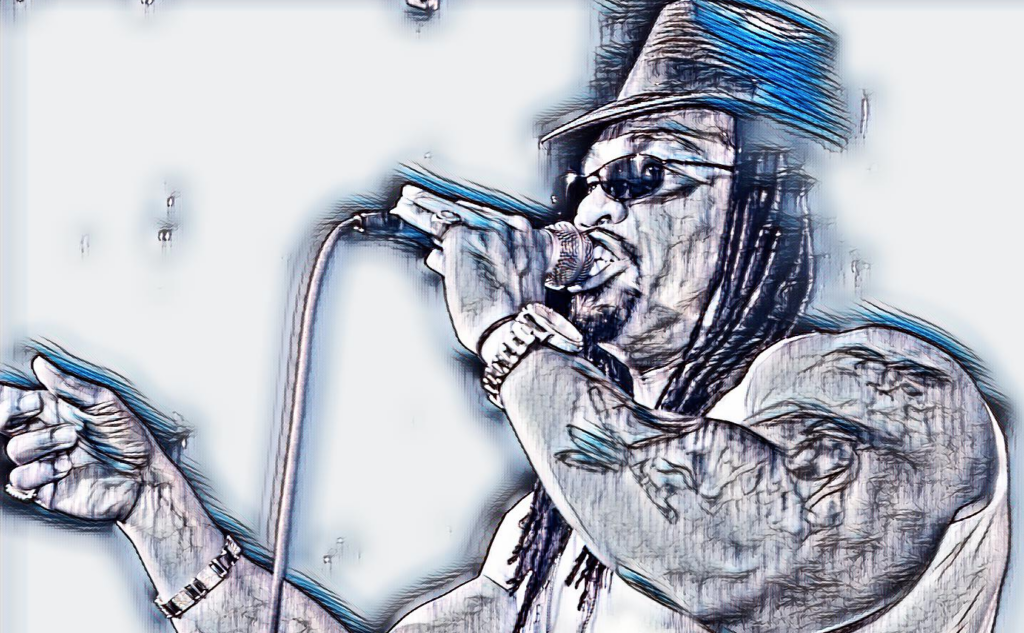

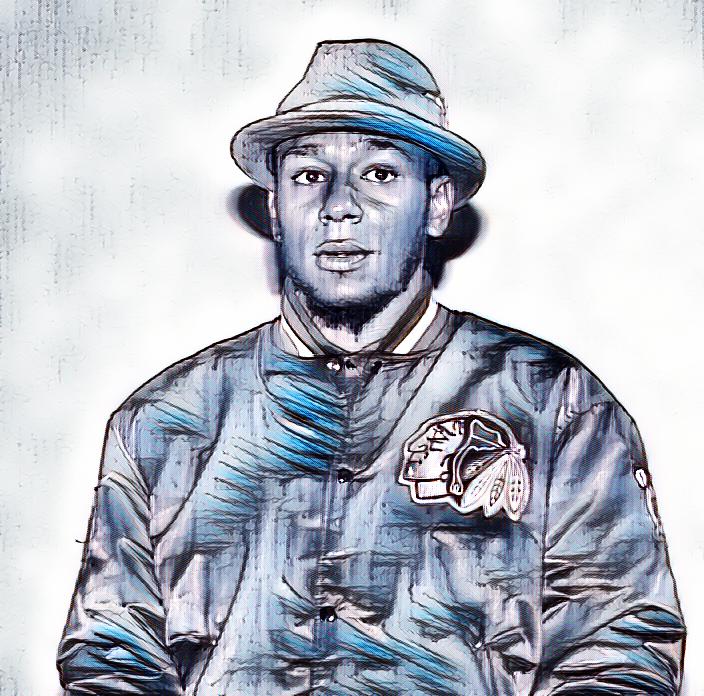
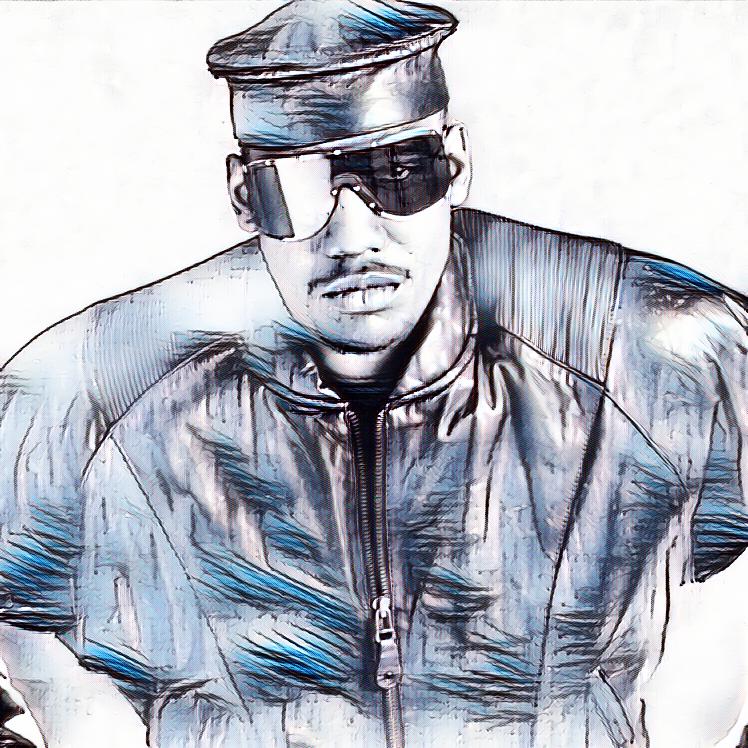

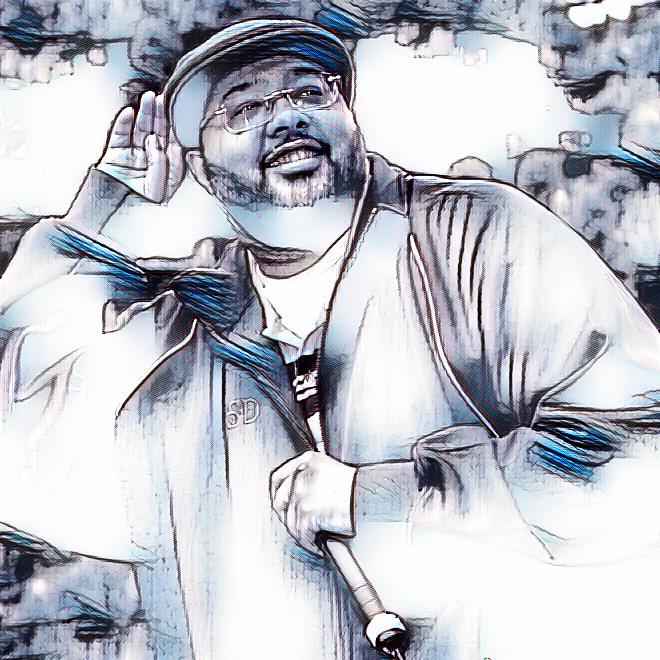
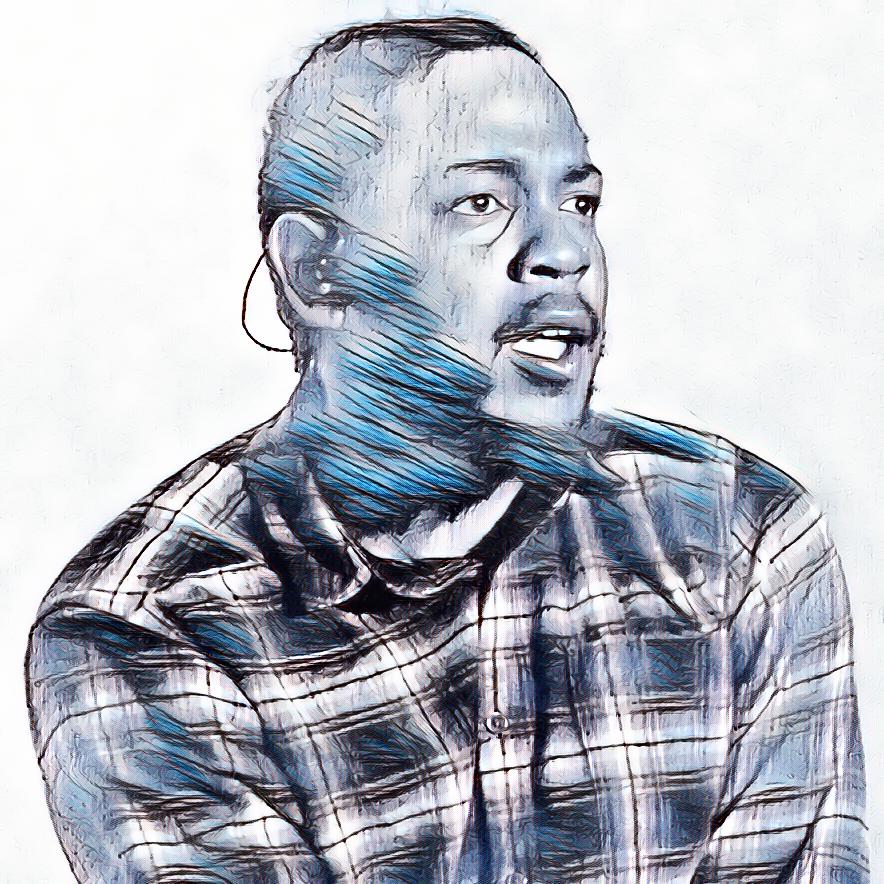
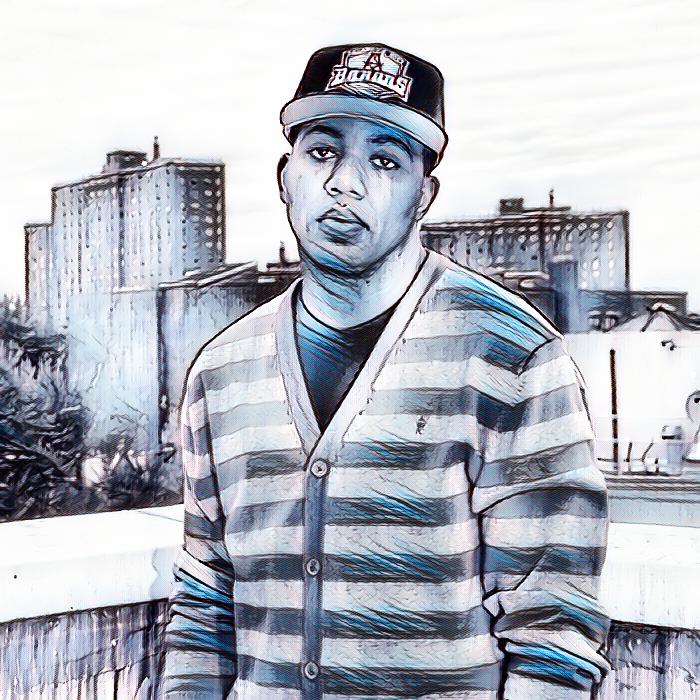

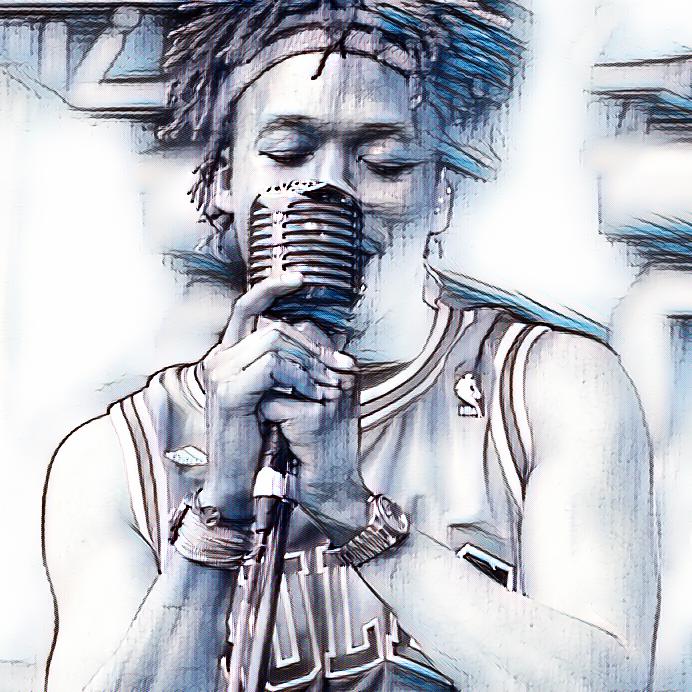
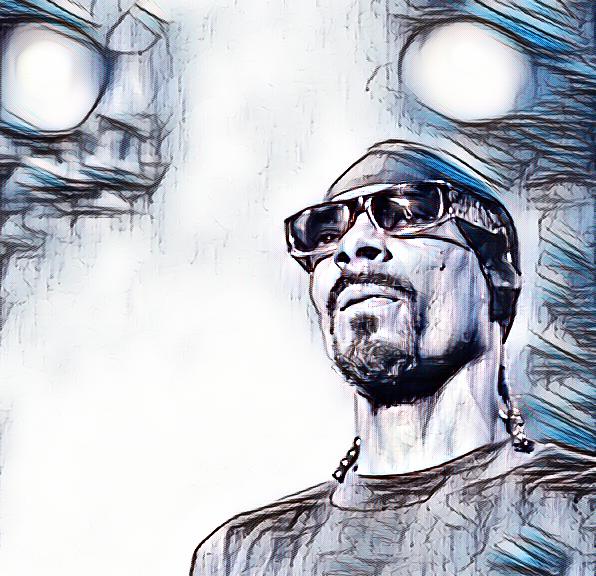

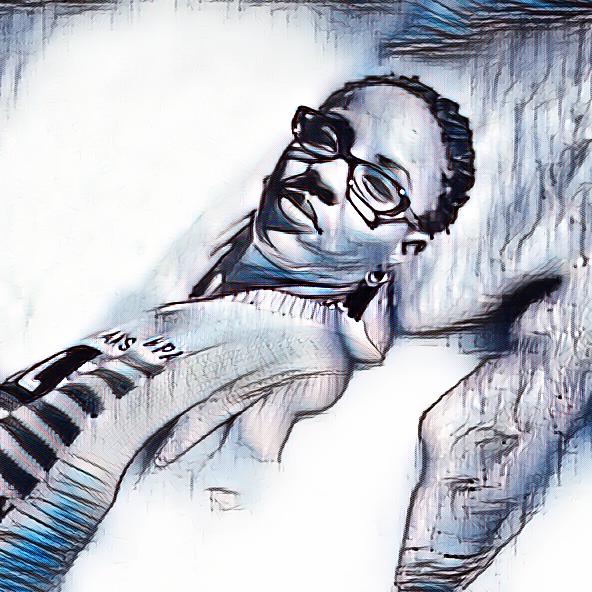
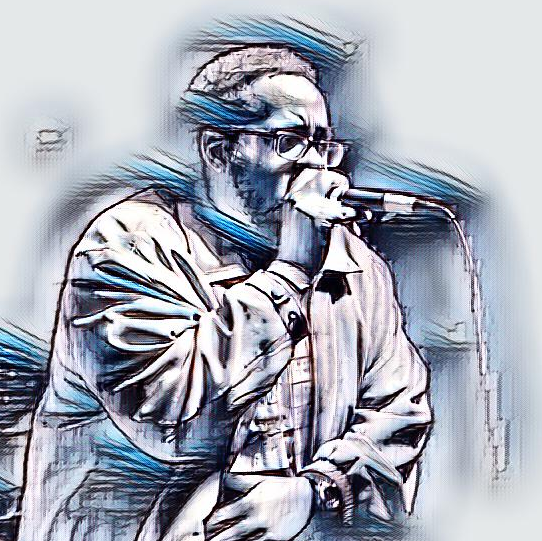
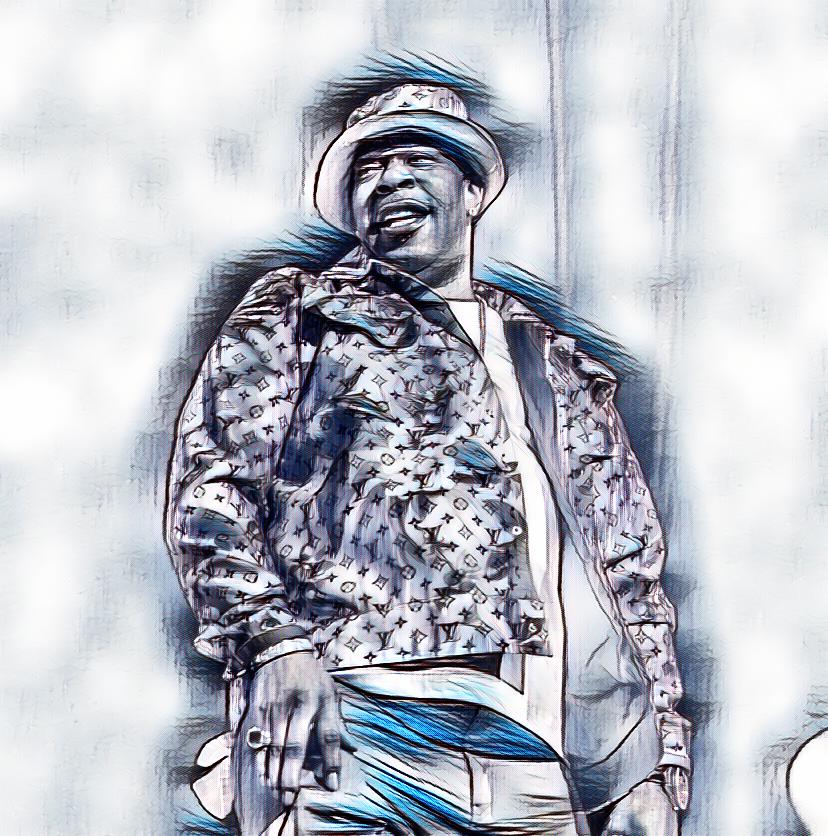
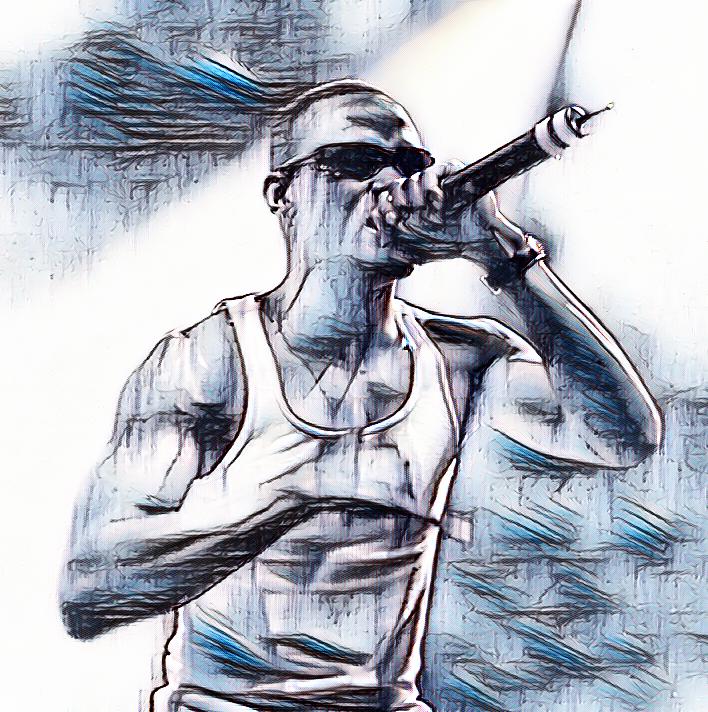
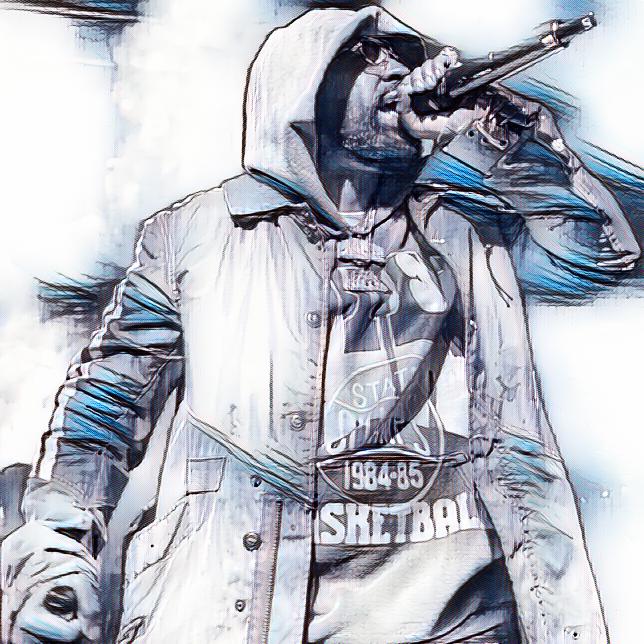
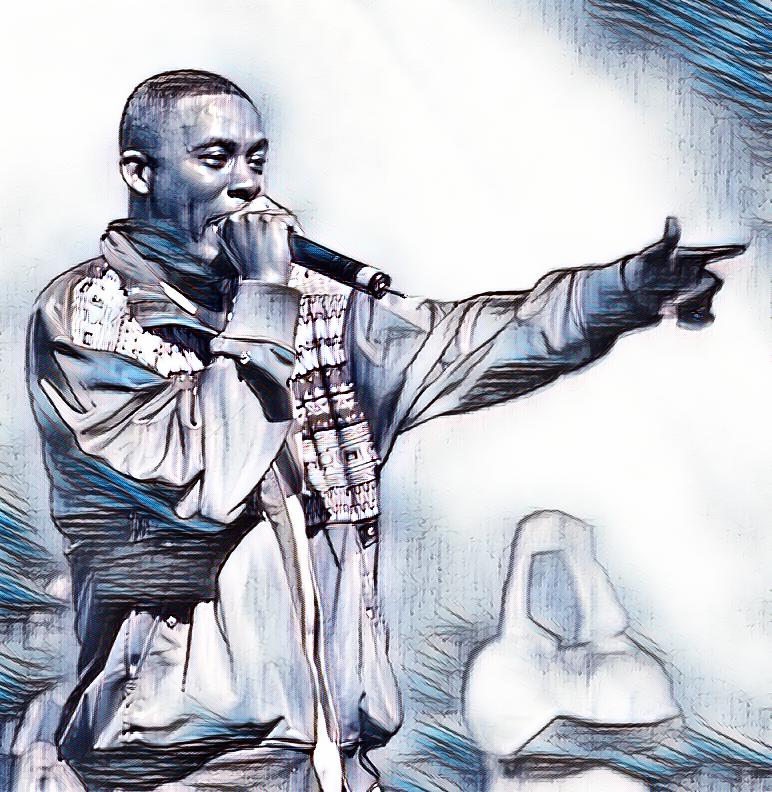

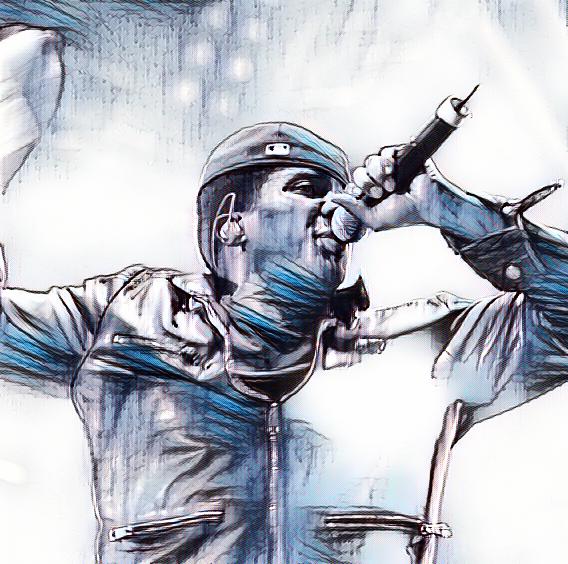
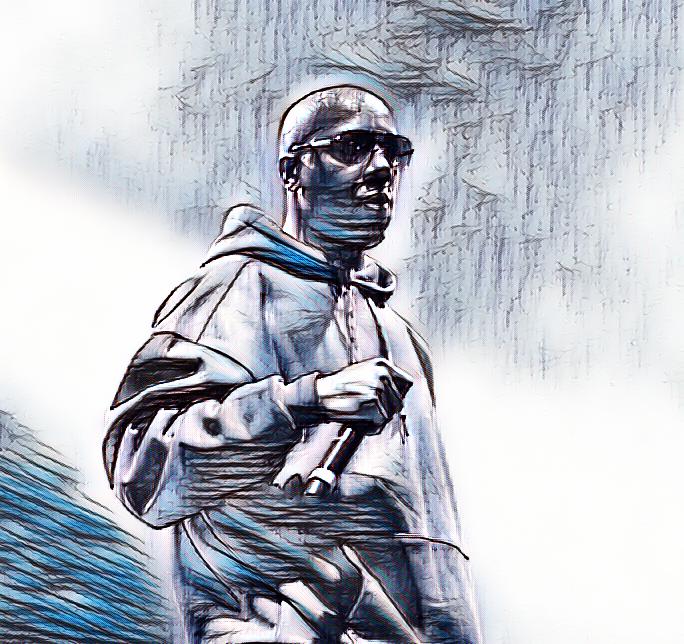
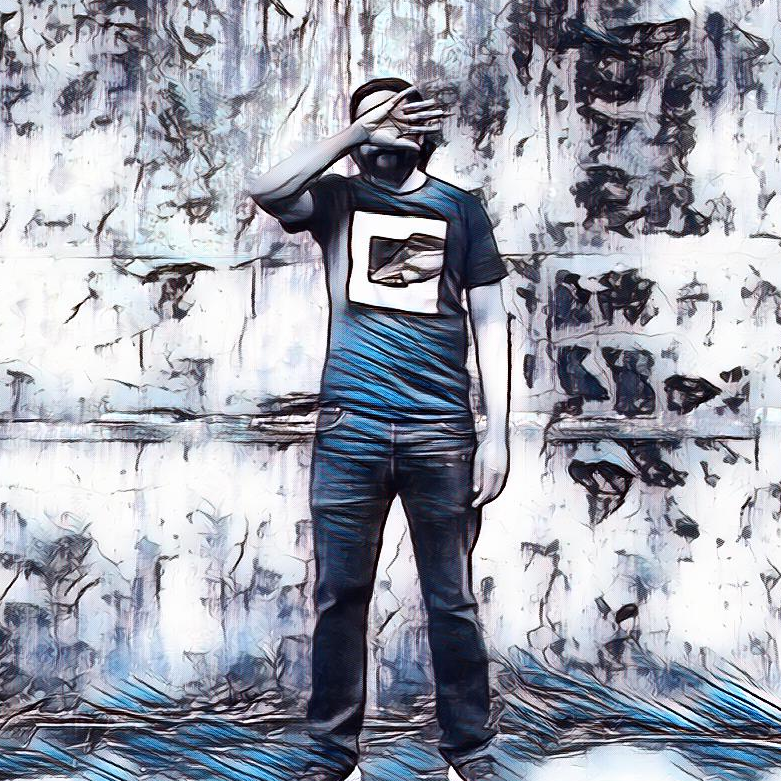
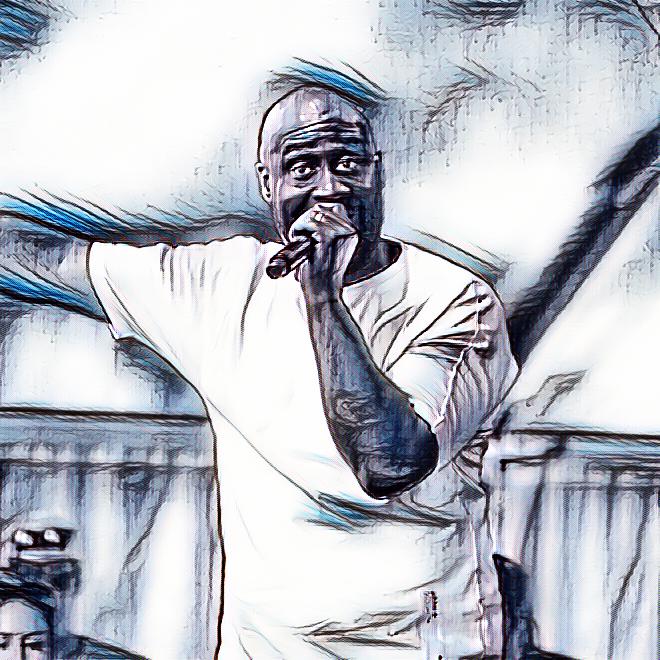
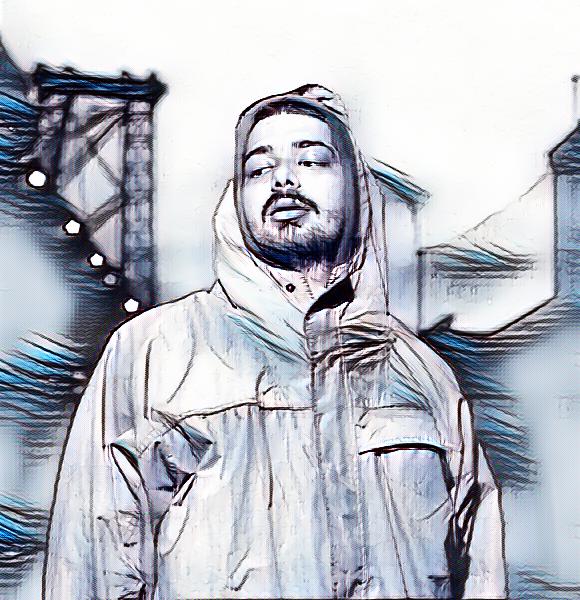

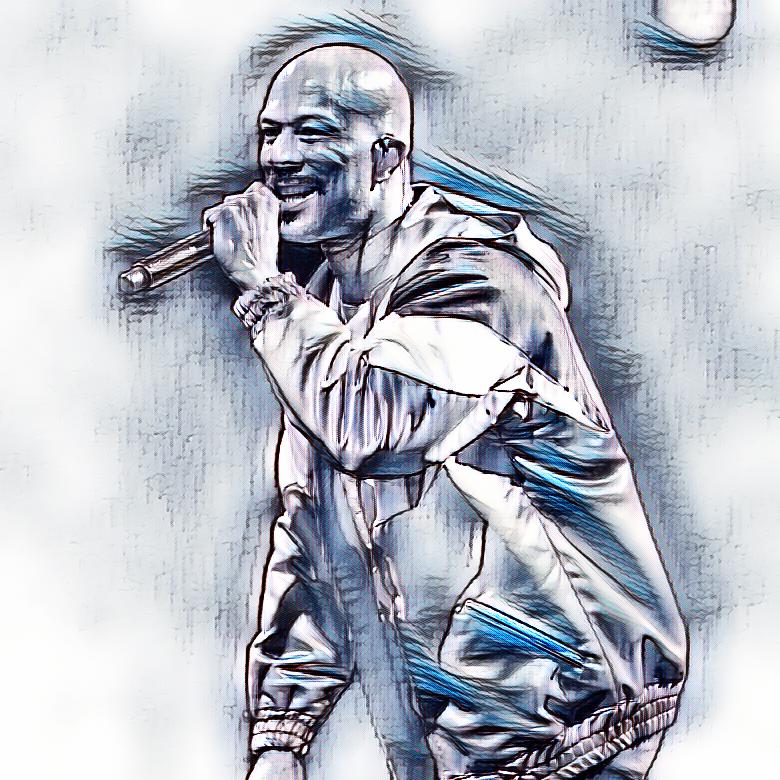
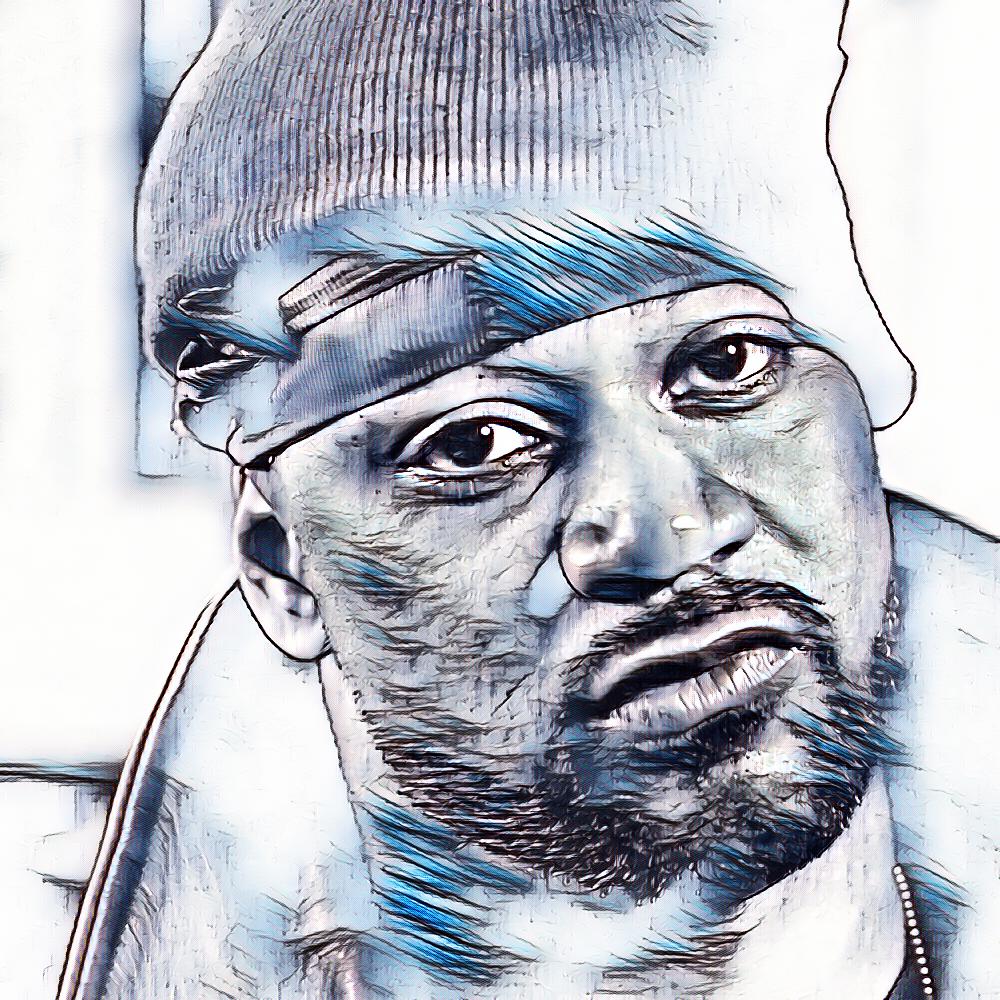



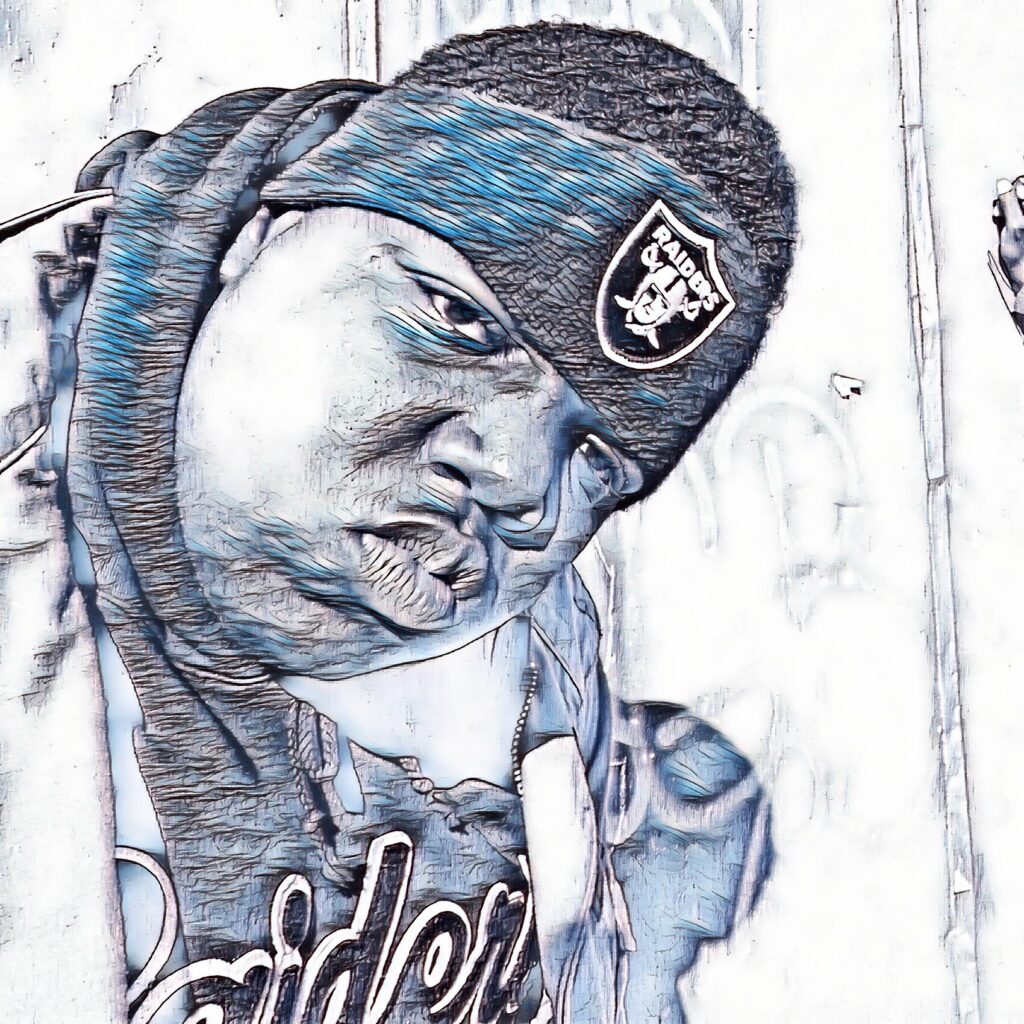

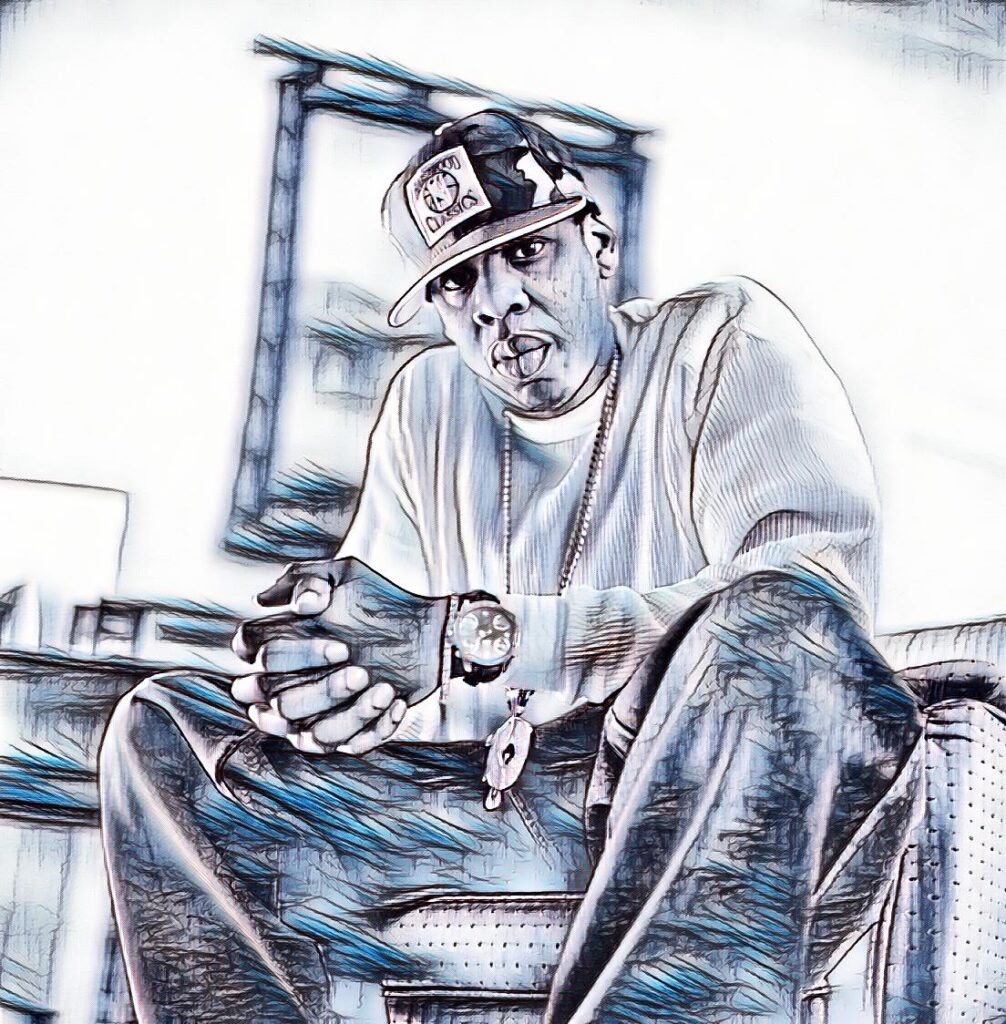

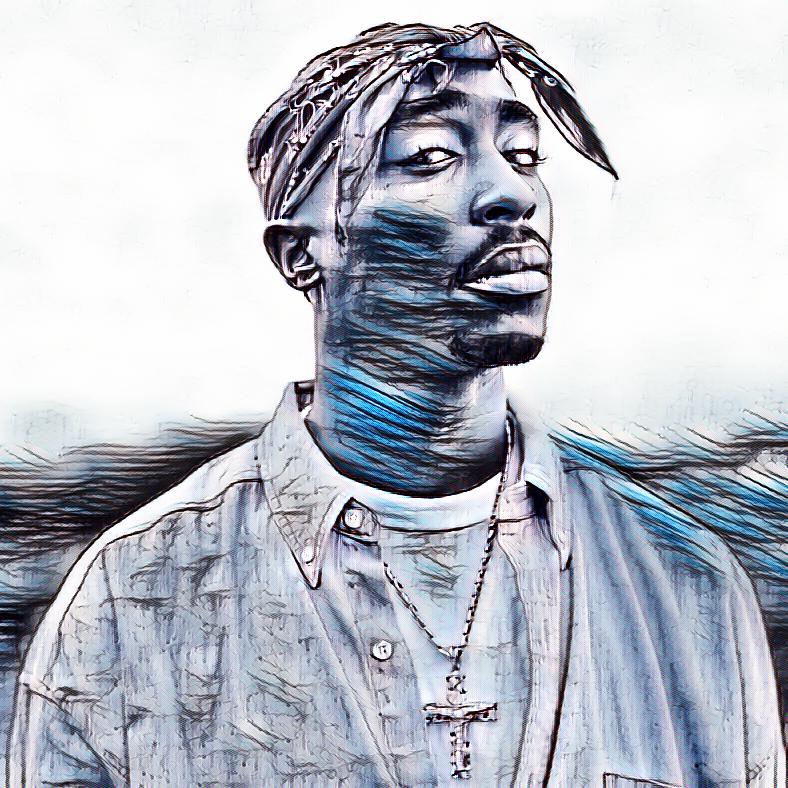

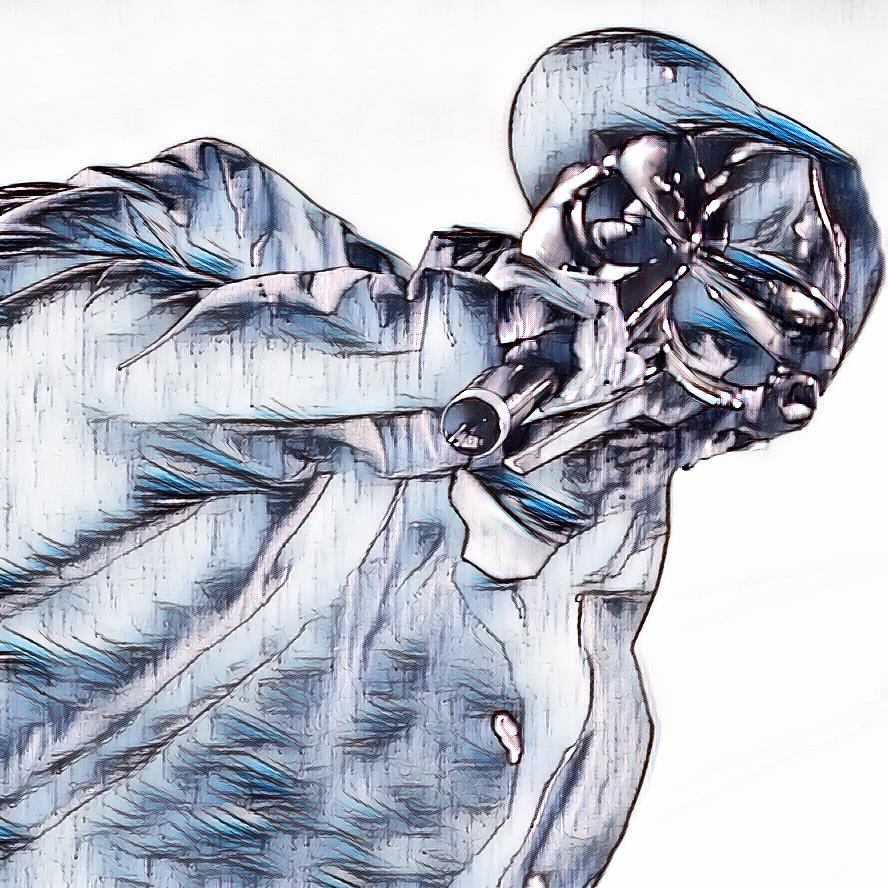

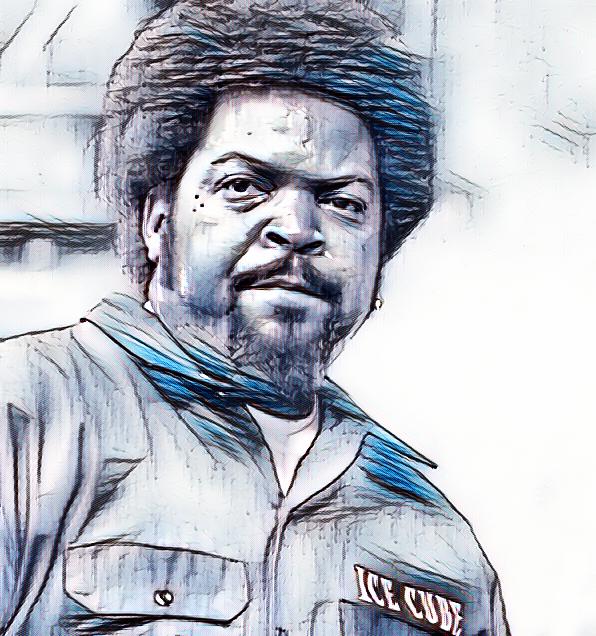
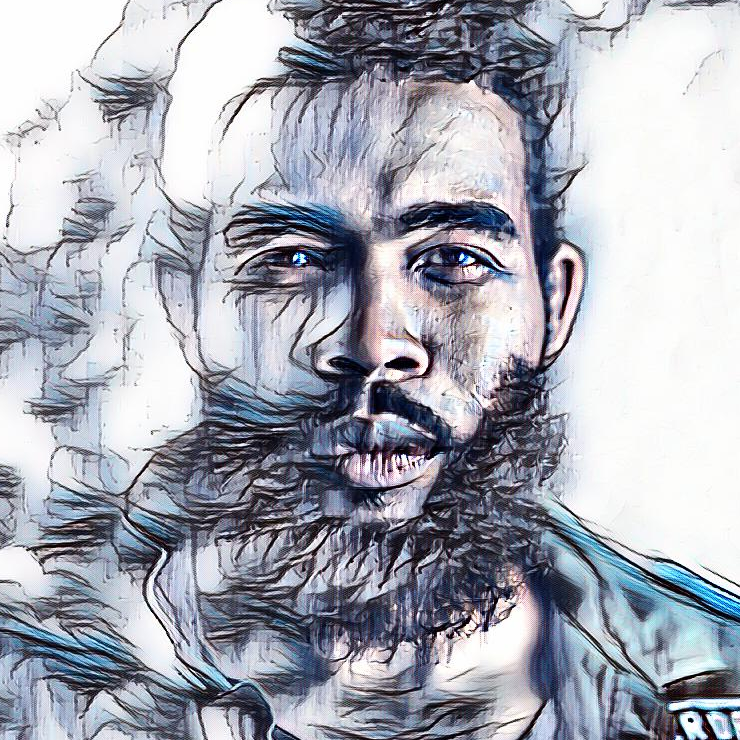
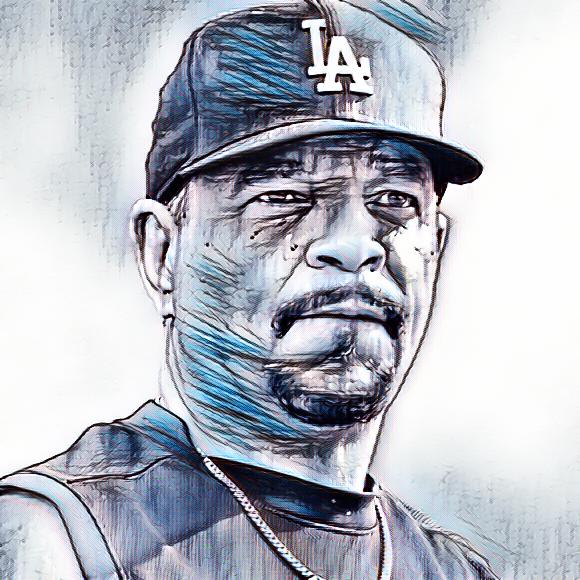
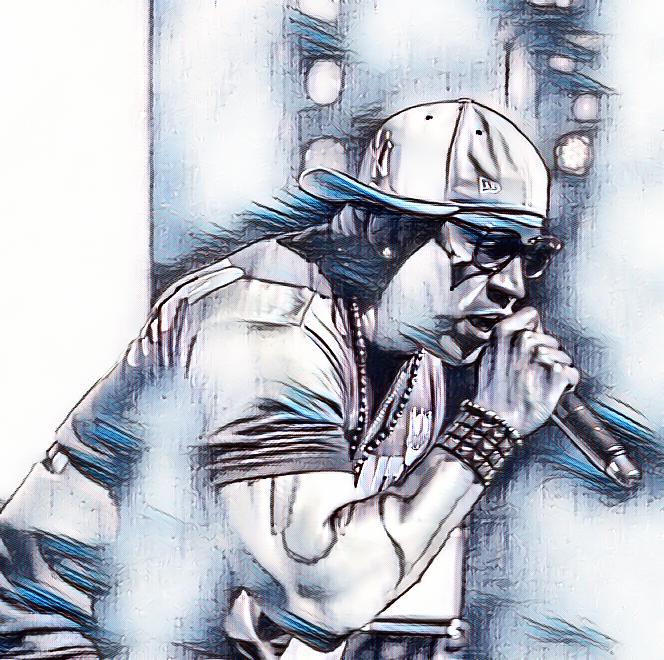

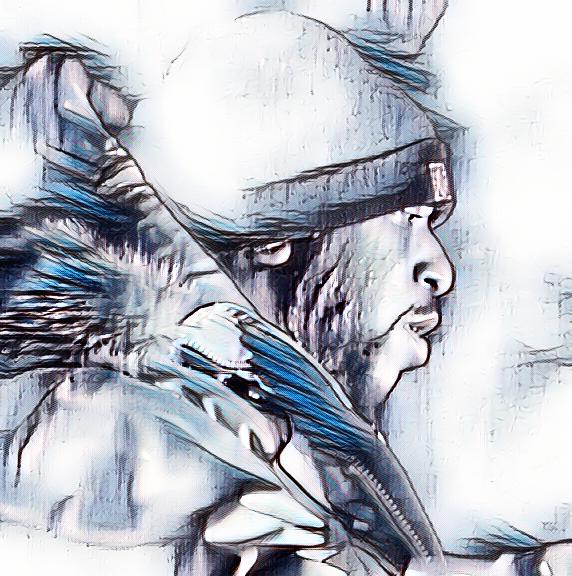

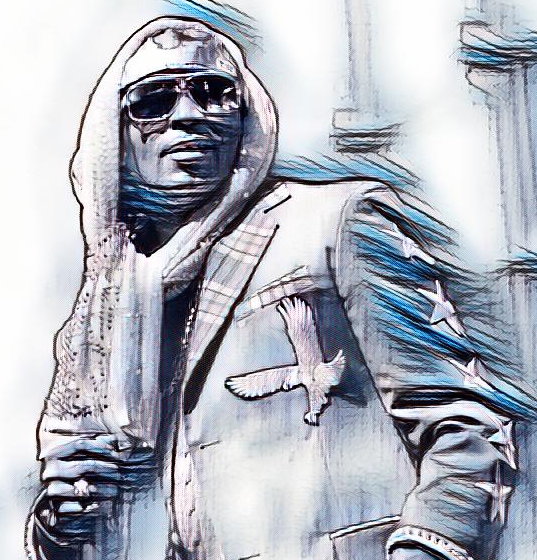


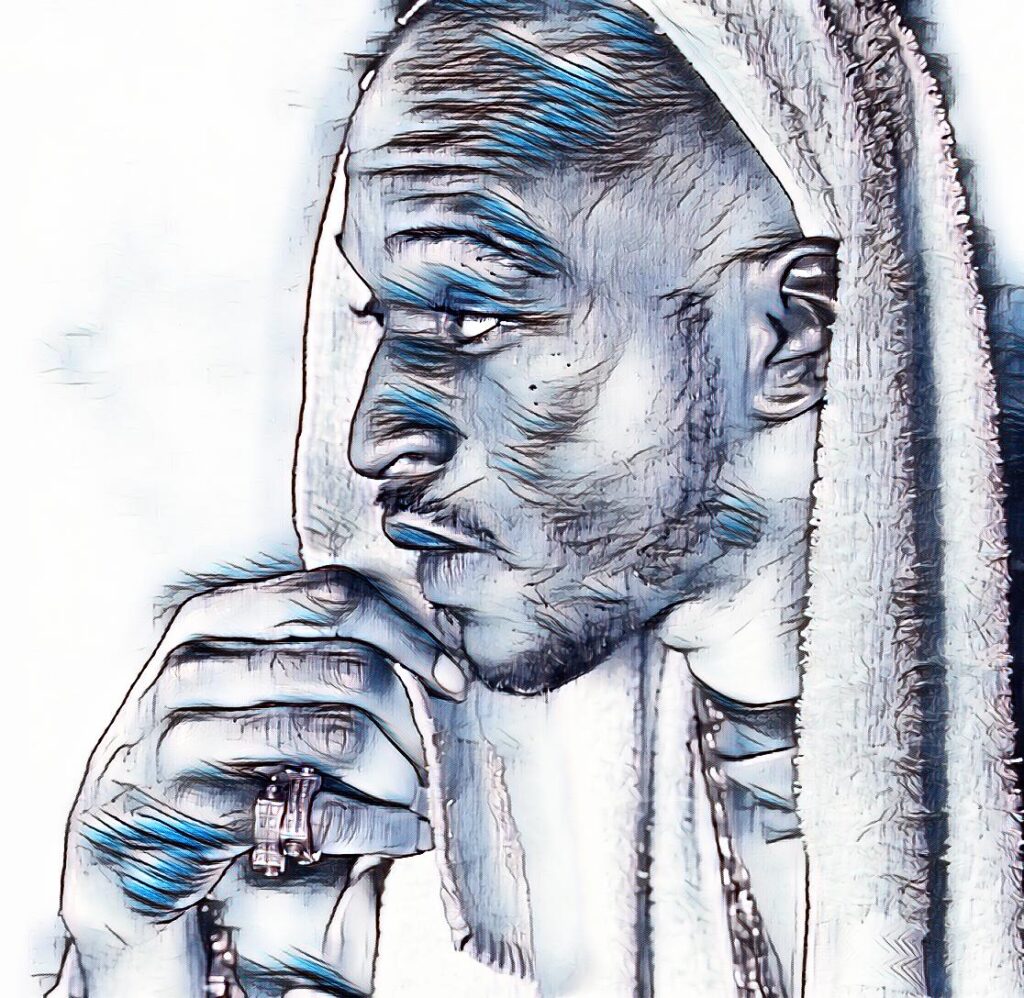
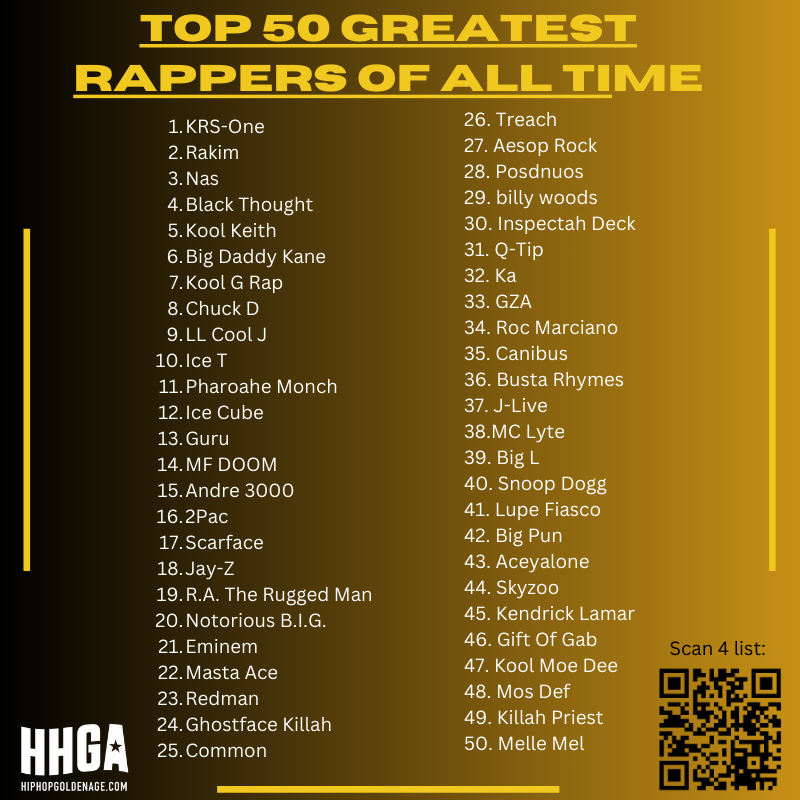
Bro…wtf?…
Gift of gab at 45, q tip at 31 and f****** ll cool j and ice t above him?
Aaaaaanyway.
RA the rugged Man in between Jay Z and Biggie is insane haha
Finally a list I can actually respect (unlike that dreadful list from billboard last year). While I definitely don’t agree with the order of everything and I would place some rappers far lower and others far higher, there wasn’t really one name that left me scratching my head in disbelief (drake, wayne, kanye etc) that I usually see too high on these sort of lists, but as you said in the beginning, rappers who use ghostwriters must be left out.
Well executed and thorough as always, friends. However, I think MC Casanova deserves a nod. Ahead of his time with his intricate, clever flows, he galvanized the burgeoning NY hip hop scene in the late-seventies, early-eighties. I love KRS at #1. “illegal Business” was the first Hip hop song that actually taught me something about the world, and with the dope Fat Albert sampling, and that ol’boom bap in full effect; that song, and Young MC’s “Bust A Move,” got me hooked on hip hop when I was a kid.
Oops. Ya’ll got Grandmaster CAZ in there, I see. My bad ne’er mind
I think Boots Riley of The Coup deserves a nod
Brother Ali at least 80 places too low!
I think Kendrick is top 10 all things considered. He’s the goat to me but having him in the 40’s is just insane but I respect y’all opinion
You dont have to be the same opinion about everyone but this list is retarded ahaahaah
the authors list is all over the place. way too many discrepancies. i was gonna list them but whats the point? this list is a joke and whoever wrote it has no business talking hiphop.
This is the sites list and your own list maybe different.
Should have called it “50 mcs almost as good as Methodman.”
You don’t even have AG in the bottom half…
Madness…without these 3 that is…
-Evidence
-Breeze Brewin
-Homeboy Sandman
Phonte at 66…come on…
At least they included maybe the most slept on cat ever…J-Live….
I respect all opinions when it comes to music, except when people say craaazy things. and calling this list “a complete joke”–someone who enjoys hip hop–calling a list, rich with the music’s greatest innovators and artist’s, “a complete joke,” is some craziness. C’mon brah, I would love to debate you in person on this over a good whiskey, just to hear how you could possibly justify that comment. I mean, who are you listening to? Cuz if you think this list is a “joke,” you must be listening to some pretty space-aged ahead of our time s***. Damn, clue me in. Just sayin.
Where is DMX.